





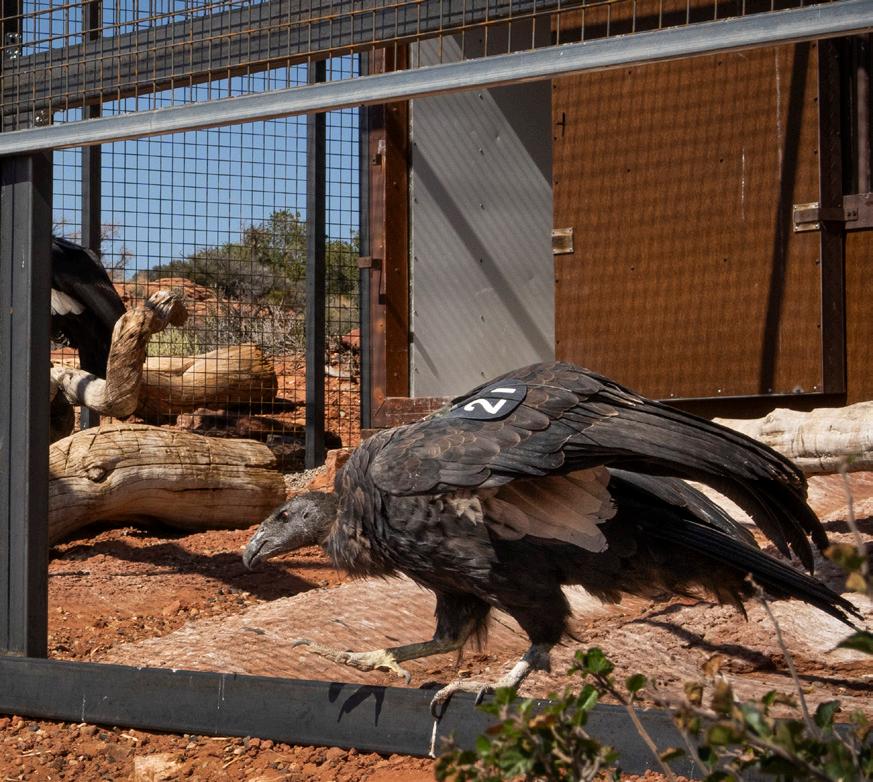
California Condor 1221, known widely as “Milagra,” captured the
condor:
condors. Scan the QR Code to read about Milagra’s journey from egg to

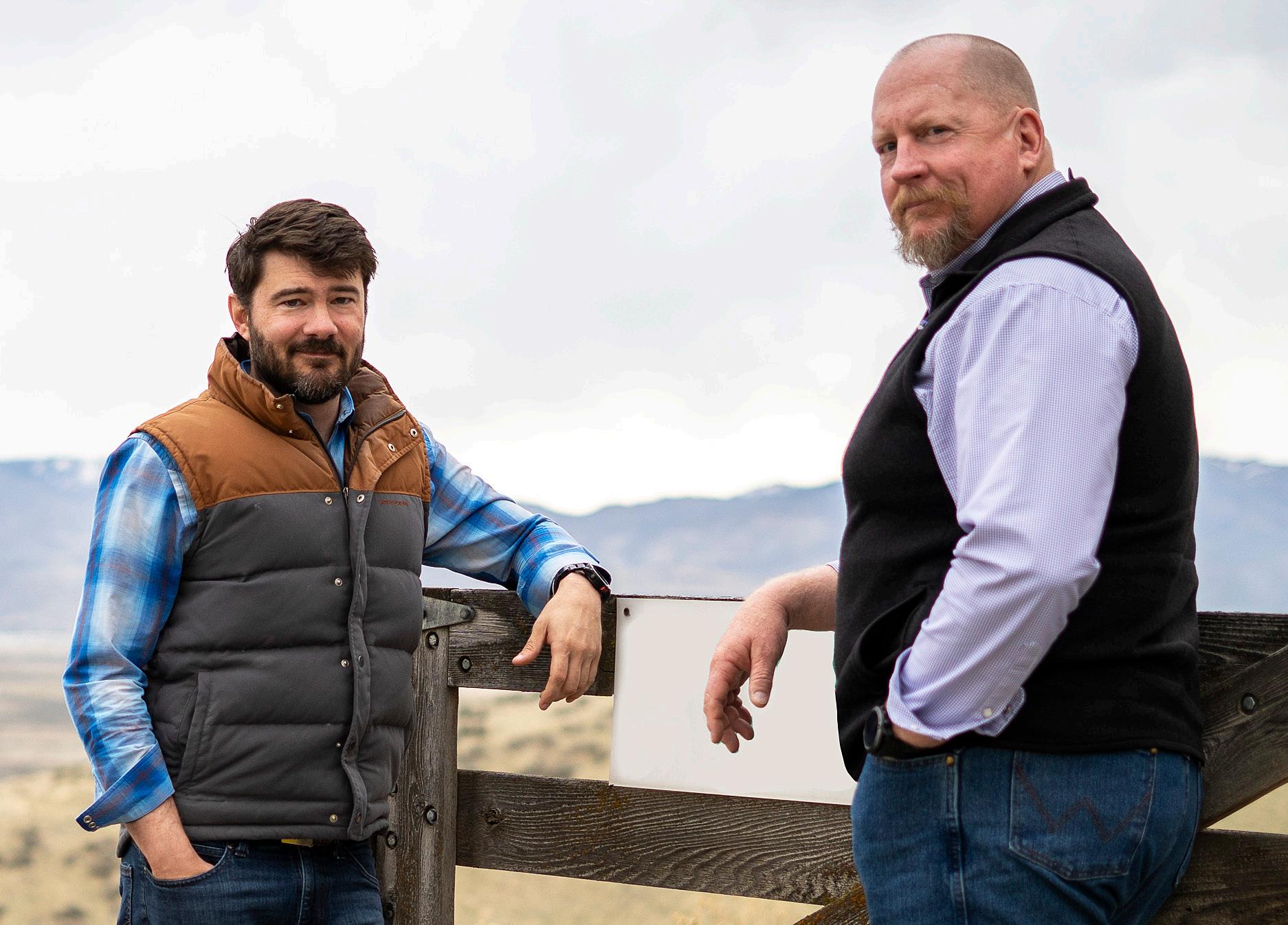
In the vast world of wildlife conservation, The Peregrine Fund emerged as a beacon of hope for raptors, driven by a vision that goes far beyond traditional conservation efforts. Our journey began with an audacious mission to repopulate a continent with falcons, but quickly evolved into a comprehensive approach we now call “Complete Conservation.”
Unlike many conservation groups that stayed within either research or fieldwork, The Peregrine Fund built a crucial bridge between scientific knowledge and practical action. We understand that saving a species requires comprehending both complex ecological systems and the human communities connected to them.
Our approach has broken traditional boundaries. We have collaborated with diverse partners, from government agencies to natural resources, always focusing on our goal: protecting biodiversity to conserve raptors worldwide. In locations like Madagascar, Panama, and the Dominican Republic, we partner with local communities, recognizing that conservation must benefit both wildlife and humans. We have trained local conservationists, built infrastructure, and created economic incentives to make protecting nature advantageous for all.
The Peregrine Fund’s story demonstrates that effective conservation combines rigorous science, practical action, community engagement, and respect for local knowledge.
The Peregrine Fund invests in future generations by funding scholarships, mentoring students, and training field biologists, creating a global network of tomorrow’s conservation leaders. Our holistic view acknowledges that a raptor’s survival depends on managing entire ecosystems and coexisting with human communities.
We have proven that with the right approach, it is possible to prevent extinction and help species and ecosystems thrive. And we are grateful for our donors and partners who fund this critical work.
Yours in

Conservation, Chris N. Parish & Chris McClure, PhD

We’re incredibly proud of our role in removing the Peregrine Falcon from the Endangered Species list. But that victory was just the beginning. It fueled our determination to expand our impact and protect all raptor species across the globe. And we do it with an extraordinary approach that is different–an approach that is The Peregrine Fund.
At the core of our work is a holistic approach that provides the understanding and perspective of conservation from the ground up. It’s not just a strategy; it’s our philosophy, our way of life. It is what makes The Peregrine Fund special, and it is through this approach that we have determined what to prioritize and where to bring focus.
Prioritizing with Purpose: With 561 raptor species worldwide, including 17 which are Critically Endangered, how do we choose where to focus? We use science to prioritize, considering factors like evolutionary distinctiveness, global endangerment, and regional responsibilities. It’s a challenging task, but one we approach with both intellect and heart.
Nurturing Future Leaders: We believe in the power of mentorship. Our experienced biologists don’t just do research and conservation; they pass on their knowledge and passion to the next generation. It’s beautiful to see the spark in a young student’s eyes as they realize they can make a real difference in conservation.
Seeing the Bigger Picture: We know that saving a species isn’t just about the bird itself. It’s about understanding the entire ecosystem, the communities that share their habitat, and the complex web of factors that influence their survival. Our approach is as intricate and interconnected as nature itself.
Community at the Heart: We don’t swoop in with ready-made solutions. Instead, we work hand-inhand with local communities, listening to their needs and wisdom. Together, we craft solutions that benefit both people and raptors. It’s about building relationships, trust, and a shared vision for the future.
From the lush forests of Madagascar to the sunbaked deserts of Arizona, our field teams are the beating heart of The Peregrine Fund. These dedicated individuals brave challenging conditions, pouring their hearts and souls into protecting the raptors they love. Every success story, every bird released back into the wild, every community empowered to protect their local ecosystem these are the moments that ignite our passion and drive us forward. We invite you to join us on this incredible journey and follow along as we tell some of the stories gathered from field notes across the globe in 2024.

At the core of our work is a holistic approach that provides the understanding and perspective of conservation from the ground up.
We invite you to join us on this incredible journey and follow along as we tell some of the stories gathered from the field across the globe in 2024.
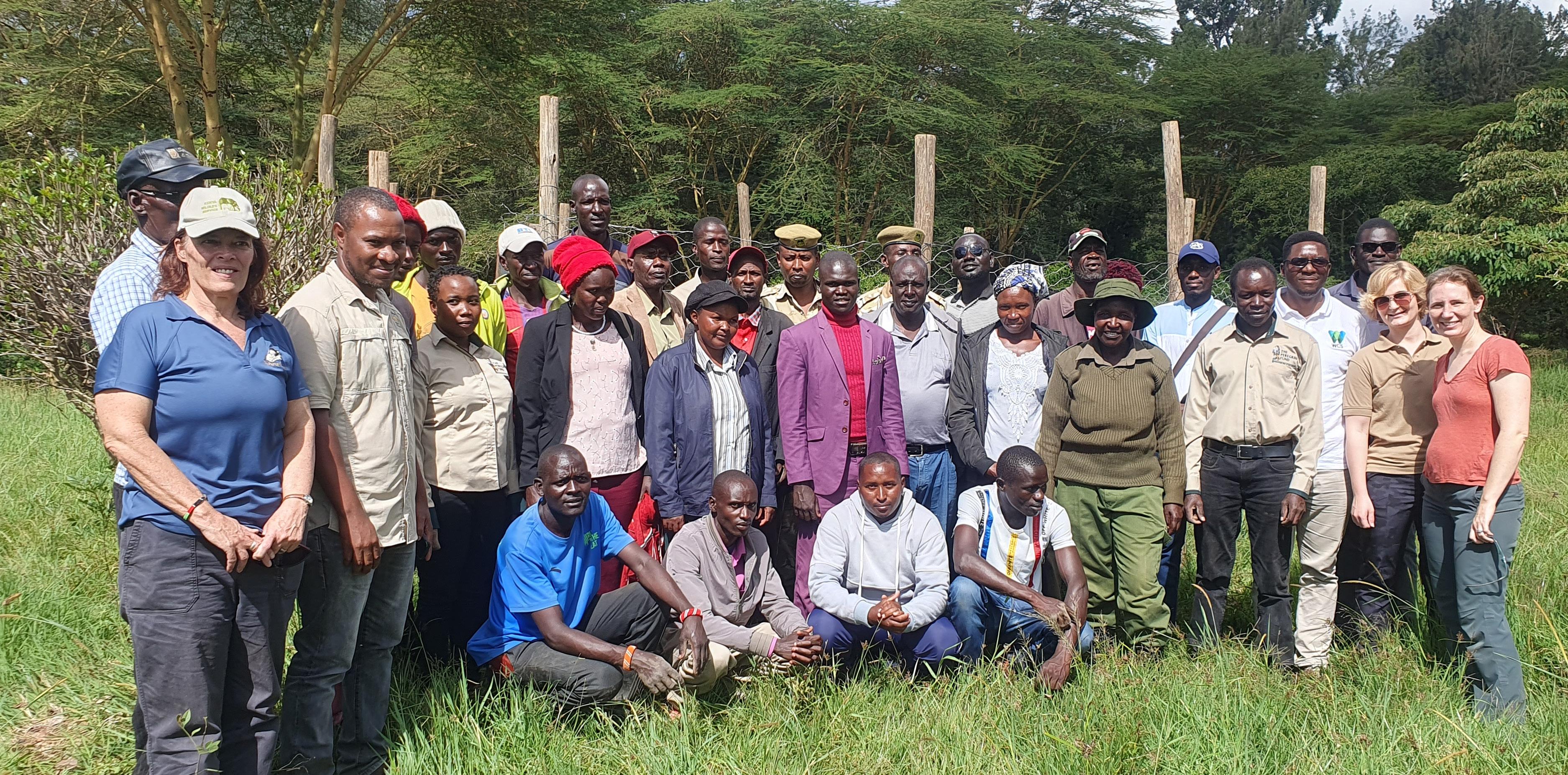
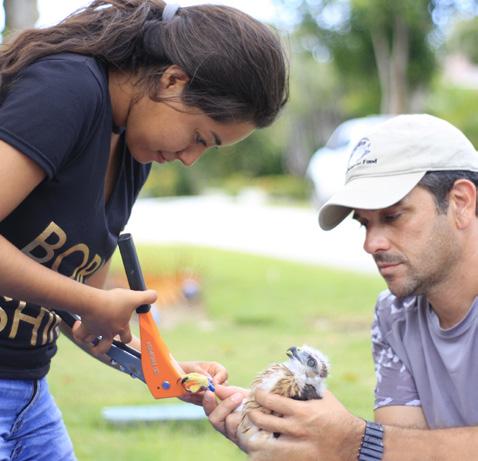






The magnificent California Condor once soared on the brink of extinction. Today, its journey back represents one of conservation’s most comprehensive rescue missions, one in which The Peregrine Fund has participated through a carefully coordinated threepart strategy.
At the heart of recovery lies the propagation program, where dedicated specialists breed condors in captivity to bolster dwindling numbers. Meanwhile, field teams vigilantly monitor free-flying condors throughout Arizona and Utah, providing critical medical intervention when birds show signs of lead poisoning still the species’ number one killer.
To address this persistent threat of lead, the North American Non-Lead Partnership works directly with hunters, government agencies, and industry to introduce voluntary education and incentive-based programs, including the use of lead-free hunting ammunition.

This multi-pronged approach creates a delicate balance: increasing population numbers through captive breeding while simultaneously focused on tracking and reducing mortality threats in the wild. Neither strategy alone would succeed; together, they represent conservation synergy at its finest.
The California Condor’s journey reminds us that raptor conservation requires attacking problems from multiple angles a lesson in persistence, partnership, and the dogged determination to save a species on the brink.


With only 22 California Condors remaining in the 1980s, captive breeding became crucial to increasing the population of this slow-reproducing raptor. The Peregrine Fund was chosen to be part of the captive breeding program in 1993, and we’ve been breeding California Condors ever since. Our Propagation Program, based at the World Center for Birds of Prey in Boise, Idaho, often flies under the radar. It is tucked in the back of our campus with a strict no-visitor policy to prevent disturbance to the birds and spread of disease. The small, five-person team works seven days a week, rain or shine (or snow), 365 days a year to ensure the birds are well-fed, healthy, and able to contribute to the next generation.
Our Propagation Team keeps busy year-round with little time for a break. Here is an overview of what a year looks like for the team:
Set up condor incubation rooms
Condor eggs laid
Condor eggs hatching
Set up falcon incubation room
Falcon eggs laid
Annual health checks for adult condors Condors fledging
Prep socialization pen for next cohort of juvenile condors
Last year’s juvenile condors transported for release
Juveniles trapped from breeding pens, given health checks, and moved to socialization pen
n Condor Activities
n Falcon Activities
n Team Activities
Artificial Incubation: After one to two weeks of natural incubation under a breeding pair, eggs are pulled by our experienced propagation team and transferred to incubators for close monitoring.
Nest Manipulations: This refers to the management of each nest through removing or placing eggs, removing or placing nestlings, and sometimes encouraging double-clutching.
Candling Eggs: Eggs are held up to a bright light weekly to check for embryonic development and abnormalities.
Health Checks: Adults and juvenile condors receive regular health checks, which include vaccinations, physical exams, and tagging (for the juveniles without a tag).
In the 1980s, there were only 22 California Condors remaining
In 2024, there were 369 wild free flying California Condors
18 months after hatching, California Condors are ready for release

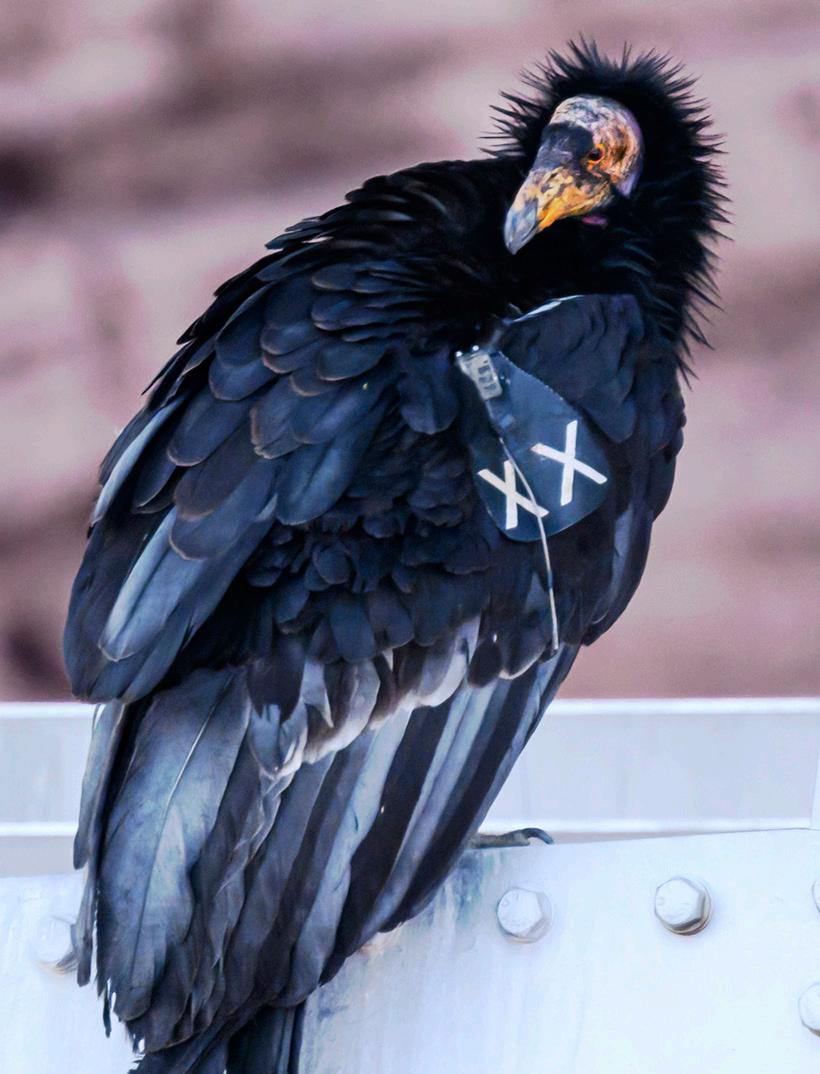
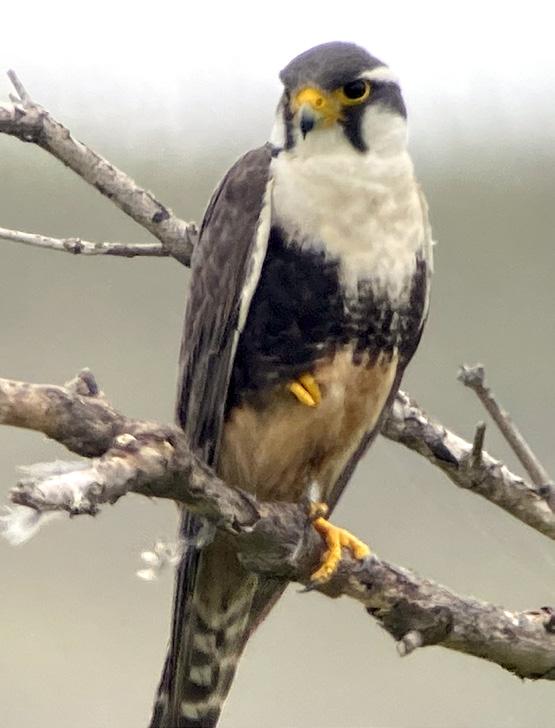

52 Condors in the Program (ranges between 50–75 annually)
18 Condor Breeding Pairs (Potential for 24)
We receive a lot of questions about our Propagation Program, so we thought we’d break down some of our most commonly asked questions.
Q
How long do the breeding California Condors remain in the Propagation Program?
A Most of the breeders remain in the breeding program their entire lives. Many are not releasable due to their comfort and familiarity with people. There have been a few cases of birds released after years of breeding that were successful in the wild.
Q How often do staff interact with the birds in Propagation?
A As little as possible. In order for the birds to feel comfortable performing breeding behaviors, they need to feel safe and undisturbed, so our team does everything remotely. Our staff remains unseen during feeding and watering, and monitors the birds with a camera system.
The only times they interact with the birds are for safety interventions, health checks, routine vaccinations, or infrastructure maintenance.
Q
A
Is highly pathogenic avian influenza (HPAI) a threat to Propagation?
Yes, as long as HPAI is in the Pacific Flyway, it will be a threat to the Propagation Program. But our facility has very strict biosecurity protocols, such as staff having dedicated clothing for work, using PPE for certain activities, and not allowing visitors onsite.
Q Is The Peregrine Fund the only facility breeding California Condors?
A No, we are one of four facilities that breed California Condors. The other facilities are the Los Angeles Zoo, San Diego Safari Park, and Oregon Zoo.
We work closely with the other breeding programs, coordinating pair arrangements and egg transfers, and often share information on propagation and husbandry techniques.
Q How are California Condor pairs chosen for breeding?
A There is a geneticist that works for the entire California Condor Recovery Program who assesses the genetics for all available breeding condors to determine which ones will make the best genetic matches. The breeding facilities then work with the geneticist to determine which pairs are possible based on logistics and individual behaviors. Pairs are introduced in the fall before breeding season begins.
Q Are all of the condors that are produced in Propagation released in the Arizona-Utah flock?
A No, some of the condors go to the California wild populations. The geneticist determines which wild flock the birds will be released to in order to keep the genetics of the wild populations healthy.
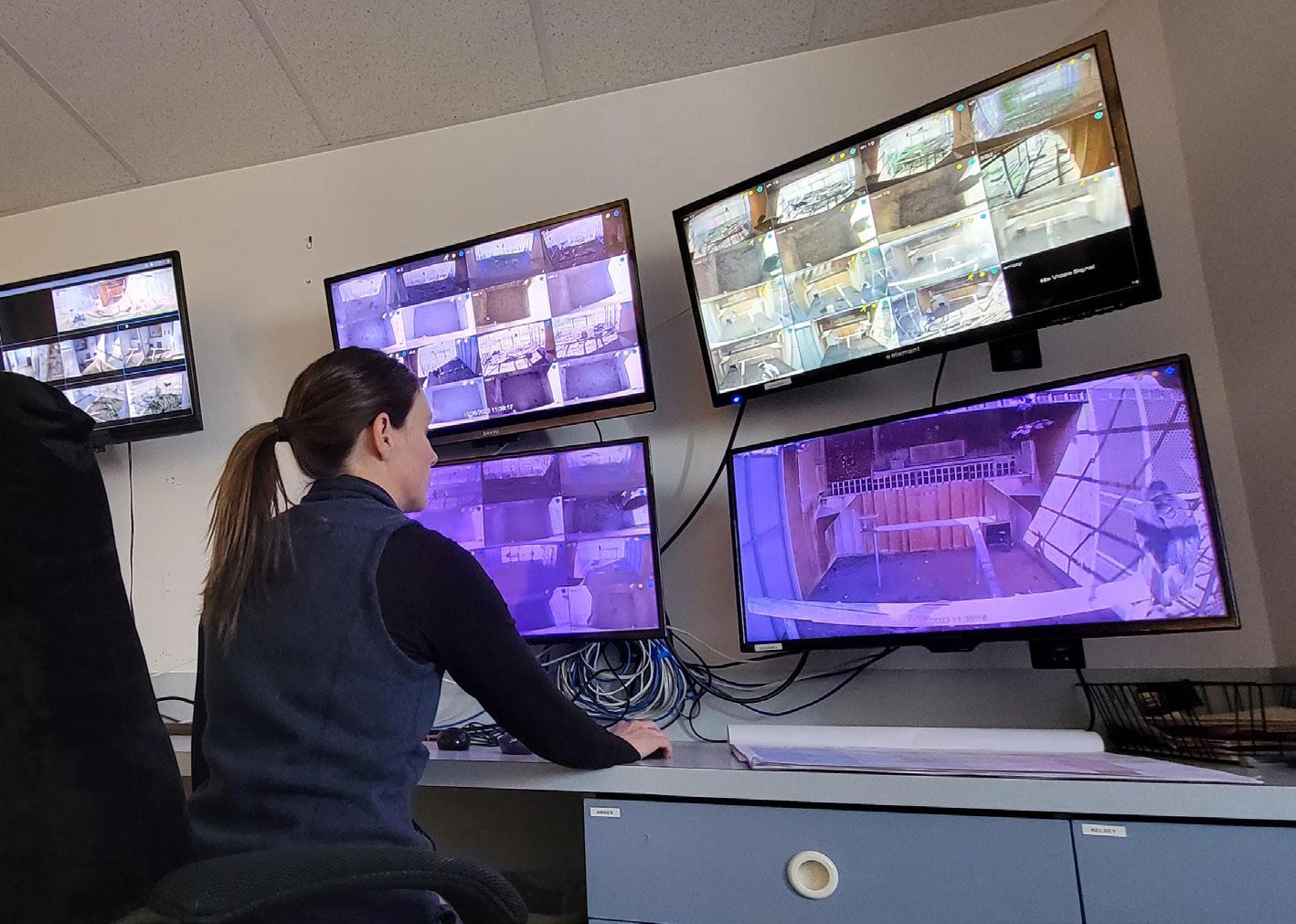


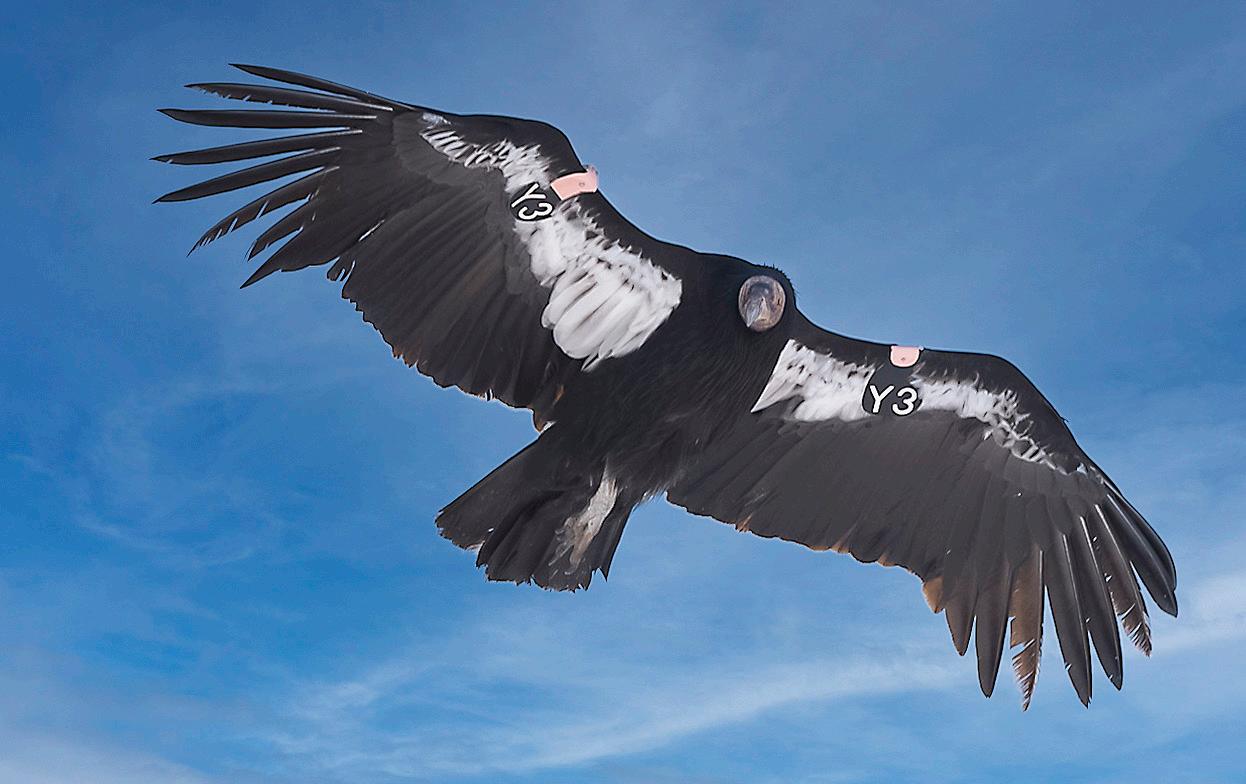
In the vast Vermilion Cliffs landscapes, where breathtaking crimson walls meet cerulean skies, our California Condor field team trudges through rugged terrain with a singular mission: to safeguard the majestic giants that grace these skies. Each bird in our ArizonaUtah population whether hatched in a propagation facility or to wild parents wears a patagial tag that tells its unique story. It’s these numbered wings and radio signals that guide our team through triumph and heartbreak as a silent threat continues to devastate these remarkable creatures.
24 Condors Returned to the Skies of Arizona “24 in 24” became our battle cry this year a bold promise we’re thrilled to have kept by releasing 24 California Condors into the wild Arizona skies in 2024. This wasn’t just a number; it was our defiant response to 2023’s forced pause during the highly pathogenic avian Influenza (HPAI) outbreak.
The autumn air at Vermilion Cliffs National Monument on Saturday, September 28th carried with it the collective curiosity of over 600 spectators who gathered to witness the moment unfold. Another 3,200 viewers joined virtually, eyes glued to screens, hearts beating with anticipation. When Condors 1213, 1236, 1209, and 1221 entered their new wild home for the first time, the crowd’s gasps turned to cheers. But it was Condor 1221 (Milagra) who stole the show and continues to capture hearts worldwide.
Milagra’s journey reads like a storybook, and the 2024 annual release provided a very happy ending. When the HPAI outbreak claimed her mother, Condor 316, while Milagra was still nestled within her egg, all seemed lost. However, our heroic team rescued the egg and rushed it to Liberty Wildlife in Phoenix where skilled hands gently helped welcome her into the world. Her journey continued to our Boise propagation facility, where foster parents and cohorts showed her what it means to be a condor and how to adapt to the wild home where she would return.
The moment that left even our seasoned field crew wiping tears was Milagra’s chance encounter with her biological father, Condor 680, after exiting the release pen. For thirty precious minutes, they fed on a calf carcass, two generations connected despite all odds a poignant reminder of why we fight so hard for every single condor.

Our celebration has been tempered by a sobering statistic: 13 magnificent condors lost to lead poisoning this year alone the most devastating toll in our program’s history. Each winter, our team embarks on a race against time, trapping free-flying condors to test for lead exposure. What we found this year sent shockwaves through our community: a staggering 90% showed signs of lead exposure, with 47% reaching critical levels.
Despite our intensive efforts to administer chelation therapy to 62% of the affected birds, the losses cut deep. Each death is not just a number, but a crushing setback for a species fighting its way back from the brink.
After years of progress in reducing condor deaths, this setback emphasizes that we stand at a critical crossroads. Lead poisoning, entirely preventable and human-caused, remains the greatest threat to these iconic birds. The condors are telling us something profound through these statistics our current approaches, while valuable, are not enough.
The path forward isn’t easy, but it’s clear. Success requires strengthening partnerships with state wildlife agencies in Arizona and Utah and enhancing outreach to hunting communities. We must innovate and expand our educational and incentive programs to create meaningful change, and we are doing so in collaboration with the North American Non-Lead Partnership. The multi-pronged approach helps us monitor the population while minimizing the cause of decline. All of these pieces are vital for recovery.
This coming year represents not just a continuation of our work, but a recommitment to finding solutions that will truly move the needle for condor recovery. These magnificent birds, once nearly extinct, depend on our willingness to adapt and intensify our efforts to remove lead from the environment. The story of the California Condor has always been one of resilience and hope in the face of tremendous odds. Together, we work to ensure they continue to roam these skies for generations to come.
“24 in 24” became our battle cry this year—a bold promise we’re thrilled to have kept by releasing 24 California Condors into the wild Arizona skies in 2024.


The North American Non-Lead Partnership’s 2024 Success Story
In 2024, the North American Non-Lead Partnership (Partnership) didn’t just move forward we surged ahead with unstoppable momentum. Our powerful combination of voluntary education and incentives has emboldened our mission, bringing diverse supporters into a growing partnership.
The heartbeat of our expansion is our new Northeast Program Manager, Adam Miller. Adam hasn’t just filled a position he’s become the driving force behind our Northeast educational outreach, turning curious listeners into passionate partners. When the Northeast Association of Fish and Wildlife Agencies joined the Partnership and secured funding for this role, they were responding to the overwhelming demand for workshops and outreach materials to support a nonregulatory approach to addressing lead exposure from hunting ammunition in wildlife. Adam’s impact was so profound that his position has already been extended through 2025, with plans for a 2026 proposal already in motion. This year, under his guidance, our message has transcended borders, reaching across the United States and into Canada.
We’re not just talking about change we’re creating the roadmap for it. Our collaboration with the Midwest Associations of Fish and Wildlife Agencies to develop best management practices for preventing lead from entering the food chain represents a breakthrough moment in our work. These guidelines will unite agencies and officials, with input from industry partners around shared, proven strategies.
Having participated in dozens of conferences and workshops in 2024, we’ve made our mark in states We’ve made our mark in states spanning from Connecticut, Colorado, Missouri, and Montana to Oregon, New Mexico, and Nevada. Our partnership circle continues to widen in meaningful ways. This year, we proudly welcomed the Navajo Nation Department of Fish and Wildlife, Alaska Department of Fish and Game, New Jersey National Wild Turkey Federation’s Women in the Outdoors, and Cutting-Edge Bullets as partners a powerful group representing tribal, state, non-profit, and industry commitment to the Partnership’s mission.
Perhaps our most far-reaching victory came through the International Hunter Education Association (IHEA), which committed to making lead-free hunting discussions a part of its curriculum for all hunter education instruction. This isn’t just a footnote in hunter education it’s a fundamental opportunity that makes awareness of hunters’ ammunition choices and their impact on wildlife possible for both hunter education instructors and students.
The numbers tell an extraordinary story: it’s possible the specially developed training modules for hunter education instructors could reach over 500,000 new hunters annually. Since 1949, nearly 40 million students have completed these courses imagine the ripple effect as the Partnership message reaches this vast community!
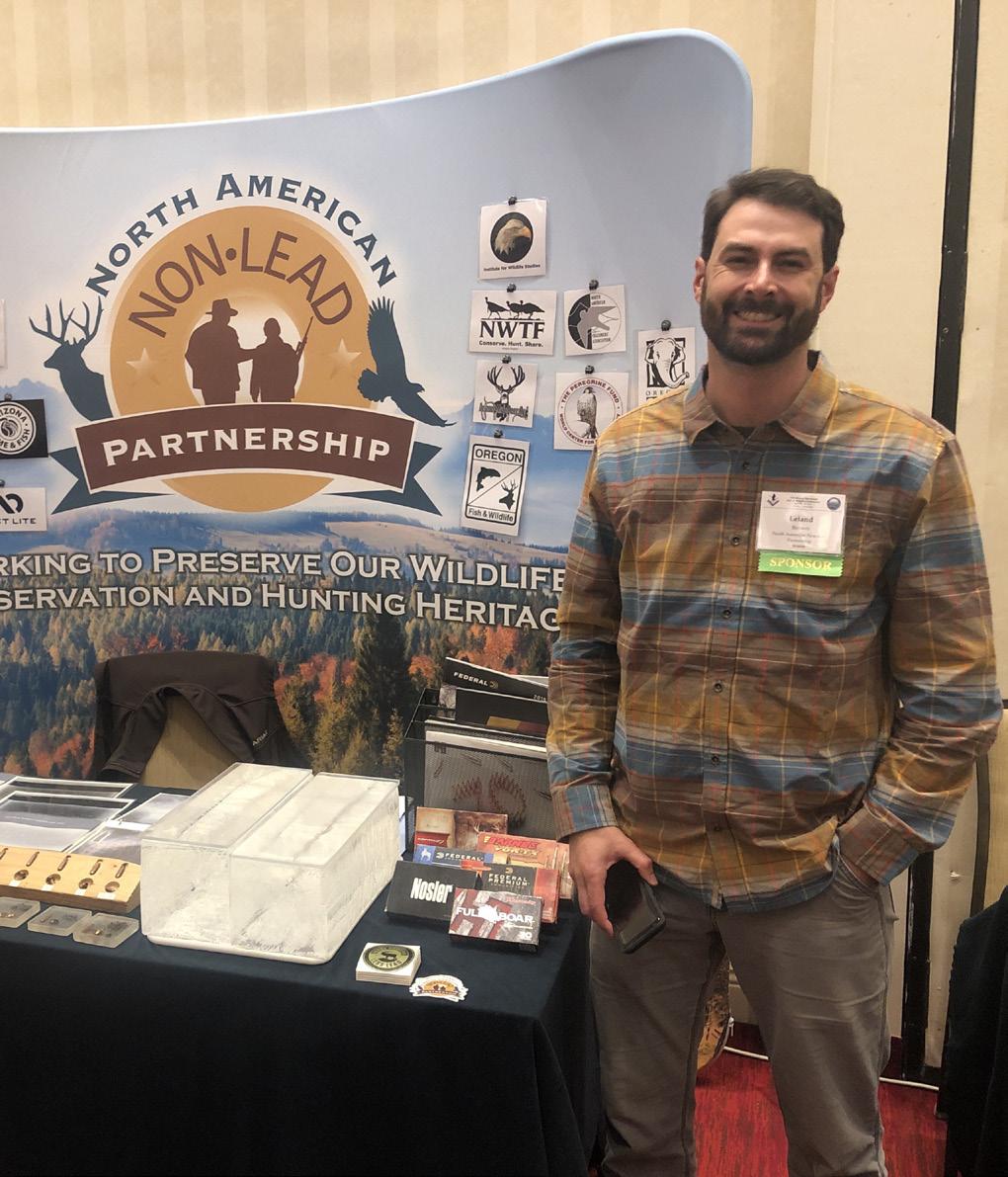
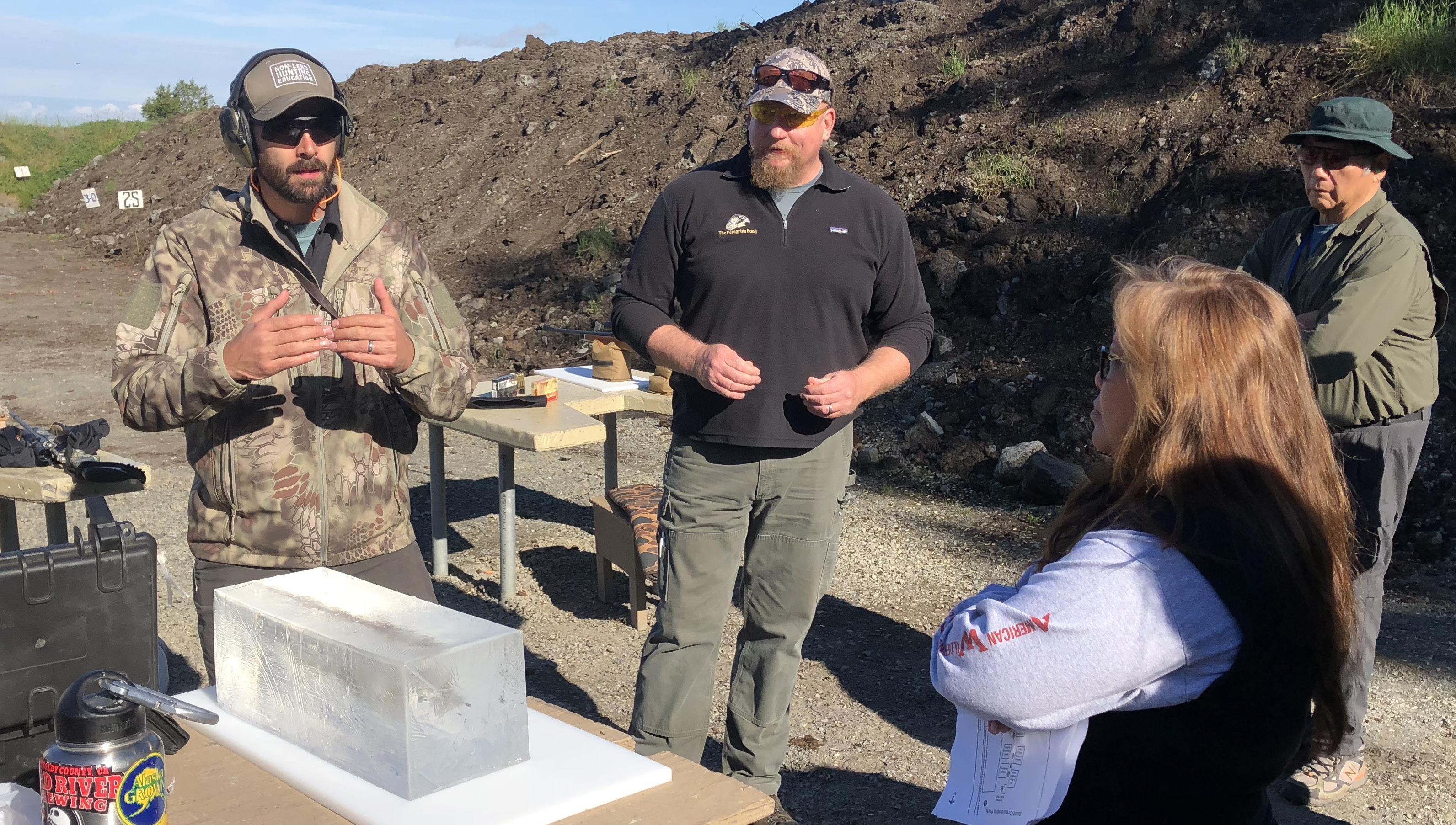
We’ve discovered that true transformation comes from both education and incentives. When the U.S. Departments of the Interior and Agriculture Hunting and Wildlife Conservation Council a diverse coalition of industry representatives, sporting groups, and conservationists recommended incentive programs over outright bans on lead-based hunting ammunition, we saw an opportunity to promote the Partnership.
Working closely with the U.S. Fish and Wildlife Service, we helped launch a groundbreaking pilot program across seven National Wildlife Refuges in September 2024. The concept is elegantly simple: hunters who document their use of lead-free hunting ammunition receive gift cards to offset their expenses. This first-ever federal incentive program bears Partnership’s fingerprints throughout from concept development to language crafting and survey design.
The results speak volumes: three out of the seven participating refuges held Partnership workshops, and out of 96 hunters that engaged with the incentive program (open to all seven refuges), 90 of the hunters were from the three refuges where workshops were held. The verdict is clear: when education meets incentives, conservation thrives.
The energy we’ve generated in 2024 is only the beginning. As the partnership expands to include voices from across all sectors of the hunting community, leadfree ammunition is shedding its misunderstood image. Each new partner joins with less resistance, creating a snowball effect of positive change.
In conservation, hope often seems in short supply. When faced with seemingly insurmountable challenges, it is easy to just throw up one’s hands and declare, “There’s nothing I can do.” But through the partnership, we’re witnessing something remarkable people confronting overwhelming odds and still taking decisive action.
As Adam Miller, our Northeast Program Manager, reflects: “In conservation, we’re not just conserving wildlife we’re presenting possibility. Every hunter who makes ammunition choices and takes action that reduces lead in the food chain for wildlife becomes part of a movement larger than themselves, protecting not just eagles and condors, but our shared natural heritage for generations to come.”
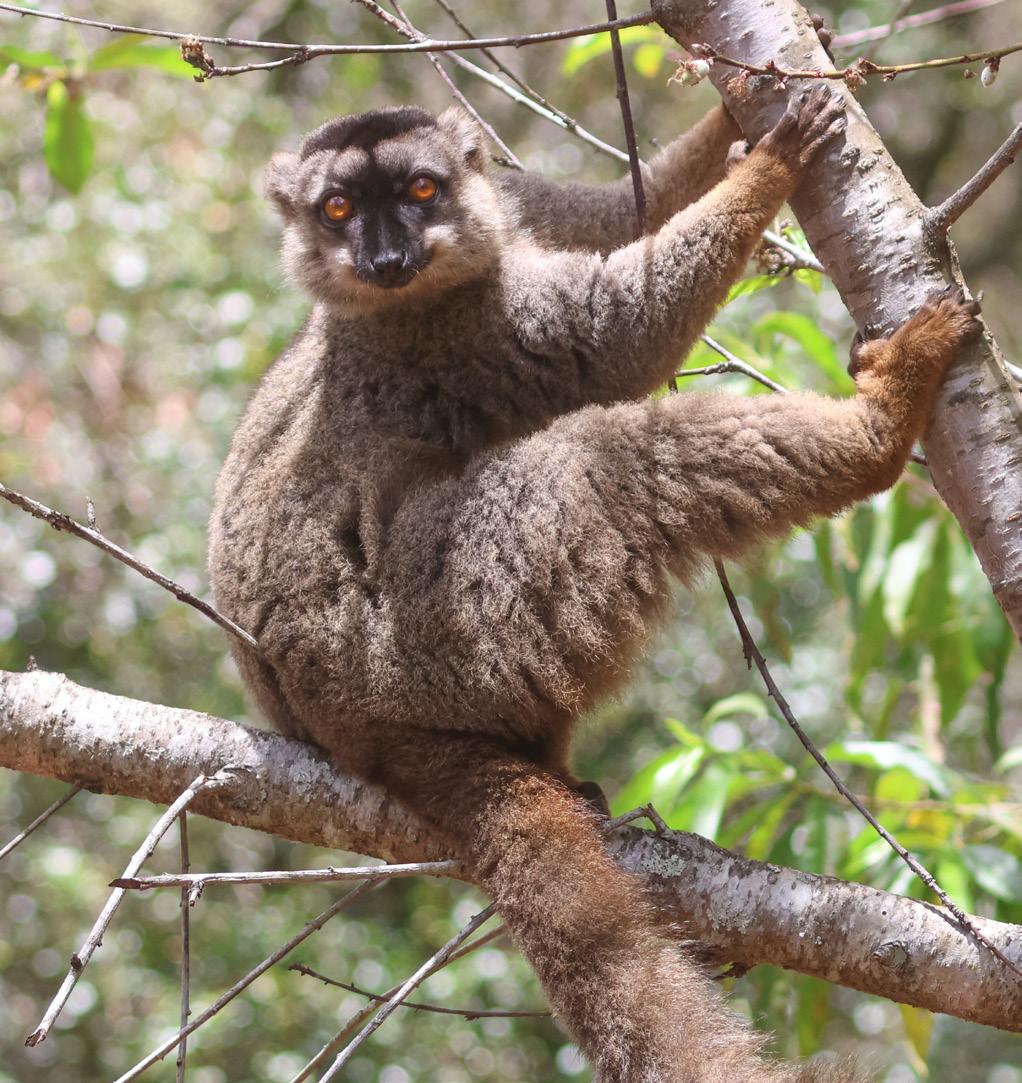
Madagascar’s story is one of breathtaking beauty and heartbreaking loss. This island a world unto itself harbors species found nowhere else on Earth. Among its most magnificent residents are the Critically Endangered Madagascar Fish-eagle and the Endangered Madagascar Serpent-eagle, raptors flying through ancient forests that are vanishing before our eyes.
The numbers tell a grim tale: a staggering 29% of Madagascar’s tree cover disappeared between 2001 and 2023, placing this biodiversity jewel as the 11thranked country worldwide for forest loss. For the Madagascar Serpent-eagle, each lost tree brings them closer to extinction. To protect these species and the thousands of others that can only be found in Madagascar’s forests, we must focus on restoring and protecting forests.
“It takes a village,” the saying goes but our work requires many. Since 2012, we’ve fostered 33 community associations surrounding four protected areas. These aren’t just partnerships on paper; they’re living networks of dedicated guardians and stewards.
In 2024 alone, communities systematically patrolled these four protected areas 106 times, eyes sharp for illegal fires and logging. They move through the forests not as visitors but as protectors, their footsteps a promise to the land that has sustained their ancestors for generations.
Each February, on World Wetland Day, hundreds gather with a common purpose: to give back to the earth. Over the past four years, our teams and community partners have planted over one million trees across 700 hectares surrounding three protected areas one million promises to the future.
These aren’t just any trees. In the Northern protected areas, we plant dense, leafy species that feed native lemurs. On the West coast, we plant large trees, which are used by local communities for coffins. Each seedling is carefully selected to heal the ecological web that supports Madagascar’s spectacular wildlife and cultural practices.
Reforestation without protection is like building a house on sand. There are multiple threats to Madagascar’s forests, and our program has taken different approaches to address each individual threat. We’ve crafted unique solutions to address the roots of forest loss:
When communities needed timber, we helped establish 820 hectares of Eucalyptus plantations, providing sustainable building materials without sacrificing ancient forests.
When coastal fishermen felled mature trees every two years for new canoes, we introduced fiberglass alternatives that lasted over 16 years saving more than 4,000 trees per 500 fishermen.
And when slash-and-burn agriculture threatened to devour protected areas, local heroes created firebreaks six-meter cleared boundaries maintained by hand during the dangerous fire season from June to mid-August. This grueling work has repeatedly stopped devastating fires from claiming precious habitat.
“It takes a village,” the saying goes but our work requires many. Since 2012, we’ve fostered 33 community associations surrounding four protected areas.

Today, our biologists witness the fruits of this holistic approach. The forests have endured, and with them, the creatures that call them home. The Madagascar Fish-eagle still soars above the canopy, a living emblem of what we can save when we work together.
The Peregrine Fund’s mission to conserve birds of prey worldwide finds one of its most inspiring chapters in Madagascar, where protecting raptors means safeguarding an entire world of biodiversity one tree, one community, and one beating heart at a time.


In 2024, we took enterprising steps in forging an exciting new partnership with Boise State University (BSU), creating a new PhD position dedicated to researching the Harpy Eagle and rainforest conservation initiatives with our Panama Program. Stepping into this role is Fabio Díaz-Santos, a passionate Nicaraguan researcher who brings over a decade of rich ecological fieldwork experience in Central America. Fabio’s impressive background includes building partnerships with indigenous communities, braving remote tropical forest expeditions, mastering ecological data analysis, wielding remote sensing equipment, and conducting diverse research spanning numerous plant and animal species.
“What’s most exciting about this collaboration is the mutual benefit to all parties from sharing resources, knowledge, and opportunities, and that we can do so on projects worldwide,” said Evan Buechley, Vice President of Conservation – International Programs.
This partnership is in perfect alignment with BSU, home to the world’s only Master of Raptor Biology degree. Established in 1987, this one-of-a-kind program operates under the prestigious Raptor Research Center, showcasing the university’s unparalleled dedication to birds of prey research.
“For us, it’s really exciting because this opens us up to the international infrastructure at The Peregrine Fund,” said Assistant Professor Jennyffer Cruz, who is advising Fabio alongside Associate Professor Trevor Caughlin. “They have all these cool projects around the world that now, potentially, our students can go and work on.”

What’s most exciting about this collaboration is the mutual benefit to all parties from sharing resources, knowledge, and opportunities, and that we can do so on projects worldwide.
Evan Buechley Vice President of Conservation – International Programs
Fabio joined our Panama Program team in October, immersing himself in the local landscape, cultivating meaningful relationships with communities, and launching data collection for his project. His academic journey at BSU begins in the Spring of 2025, with regular field expeditions back to Panama to continue his vital research.
While our collaboration with BSU has flourished for years domestically, this marks our first global venture together and we’re just spreading our wings! We envision this partnership growing even further with a potential for additional global program positions in the future.

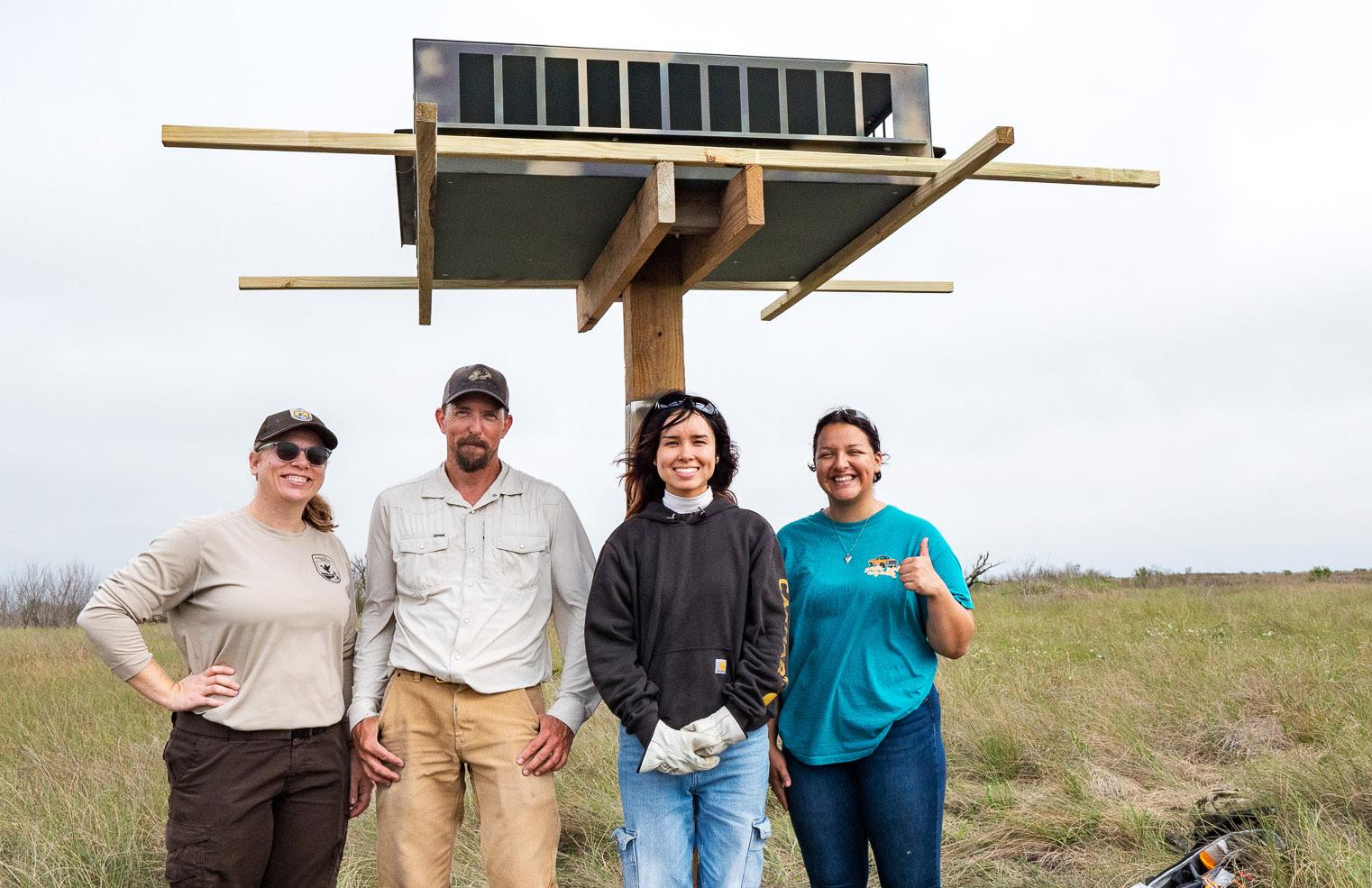
From winter preparations to year-end triumphs, 2024 was nothing short of extraordinary for the Aplomado Falcon Recovery Program. February saw our dedicated team braving the Texas coastal winds to inspect and maintain nesting structures before the breeding season took flight. This year marked the completion of a multiyear mission to replace all wooden nesting platforms with resilient aluminum designs, built to withstand whatever weather is thrown their way.
As spring unfolded, we welcomed Conservation Field Biologist Jeff Grayum to the team just in time for what would become one of the most spectacular breeding seasons in program history. Over 50 falcon nestlings hatched across our monitored falcon territories, bringing renewed hope to areas that had remained silent since Hurricane Harvey wiped out 30% of the population in 2017.
The resilience of these magnificent raptors was on full display at Matagorda Island within Aransas National Wildlife Refuge, where the population rebounded to near pre-hurricane levels. One particularly special nest produced our program’s 600th banded nestling, a milestone worth celebrating in true falcon fashion.
Mid-year brought academic triumph when David Bontrager earned his M.S. in Raptor Biology from Boise State University after analyzing how habitat cover
impacted the presence of Common Barn-owls and Great Horned Owls in and around Aplomado Falcon territories research that will shape our conservation strategies for years to come.
The perfect capstone to this remarkable year arrived in the form of a $260,000 National Fish and Wildlife Foundation grant, fueling crucial grassland habitat restoration work in partnership with the U.S. Fish & Wildlife Service and National Park Service in the Lower Rio Grande Valley.
After such a stellar 2024, our team is eager to continue the momentum in 2025.


When a species teeters on extinction’s edge, it takes extraordinary dedication to pull it back. This is that story.
For over two decades, our passionate Dominican Republic team has waged a relentless battle against time to save the majestic Ridgway’s Hawk from disappearing forever. What began as a desperate conservation effort to prevent imminent extinction has shifted to a success story with increasing numbers of breeding adults each year and the species now occupying multiple areas in Hispaniola.
Despite this breathtaking comeback, the Ridgway’s Hawk still flies through dangerous skies. Every day requires vigilant monitoring, innovative management, and unwavering commitment from our dedicated team. Our vision? Establish a thriving, interconnected, selfsustaining population of these magnificent birds of prey that fly freely across Hispaniola once again.
The Critical Ecosystem Partnership Fund (CEPF) is helping us transform this vision into reality, starting with funding our development of an ambitious 10year Conservation Action Plan for the Ridgway’s Hawk. This isn’t just another document gathering dust on a shelf it’s a living blueprint born from rigorous biological assessment, honest evaluation of our past efforts, and cutting-edge conservation methodology. It keeps us accountable and is adaptable to whatever successes or failures our research and fieldwork offers.
Thanks to CEPF funding, our teams have secured some of the resources needed to start putting this plan into action.
When The Peregrine Fund first encountered the Ridgway’s Hawk in 2002, we discovered the birds faced a threat no wingspan could outmaneuver: human perception. Local communities viewed these hawks as chicken predators, leading to shooting and capturing that decimated their numbers.
Our team pivoted quickly, launching an environmental education program that reaches into classrooms, community centers, and households across the region. Through immersive presentations, engaging classroom activities, empowering teacher workshops, colorful brochures, and personal doorto-door conversations, they’ve sparked a remarkable transformation in community attitudes.
Annual Ridgway’s Hawk Day celebrations May 25 in the Dominican Republic and August 19 in Haiti stand as a joyful testament to this shifting perspective. Where hawks were once feared, they are now revered and elevated with community pride for this unique, endemic species. CEPF helps support our passionate educators who inspire thousands more hearts to beat in rhythm for the conservation of this precious species.
With the Conservation Action Plan as our guide, we face the future with both pride in our progress and hope for what’s to come. The Ridgway’s Hawk isn’t just surviving anymore it’s beginning to thrive.
Marta Curti, Hispaniola Program Director

Through this harmonious blend of education, handson nest management, strategic reintroductions, and innovative threat reduction, the Ridgway’s Hawk population has doubled in just two decades a conservation success story that defies expectations. Yet, the species still wears its “Critically Endangered” status like a heavy burden. The path to full recovery stretches before us, and it is challenging but clear: we must continue neutralizing threats, increasing connectivity between hawk populations, expanding hawk territories, and building local capacity.

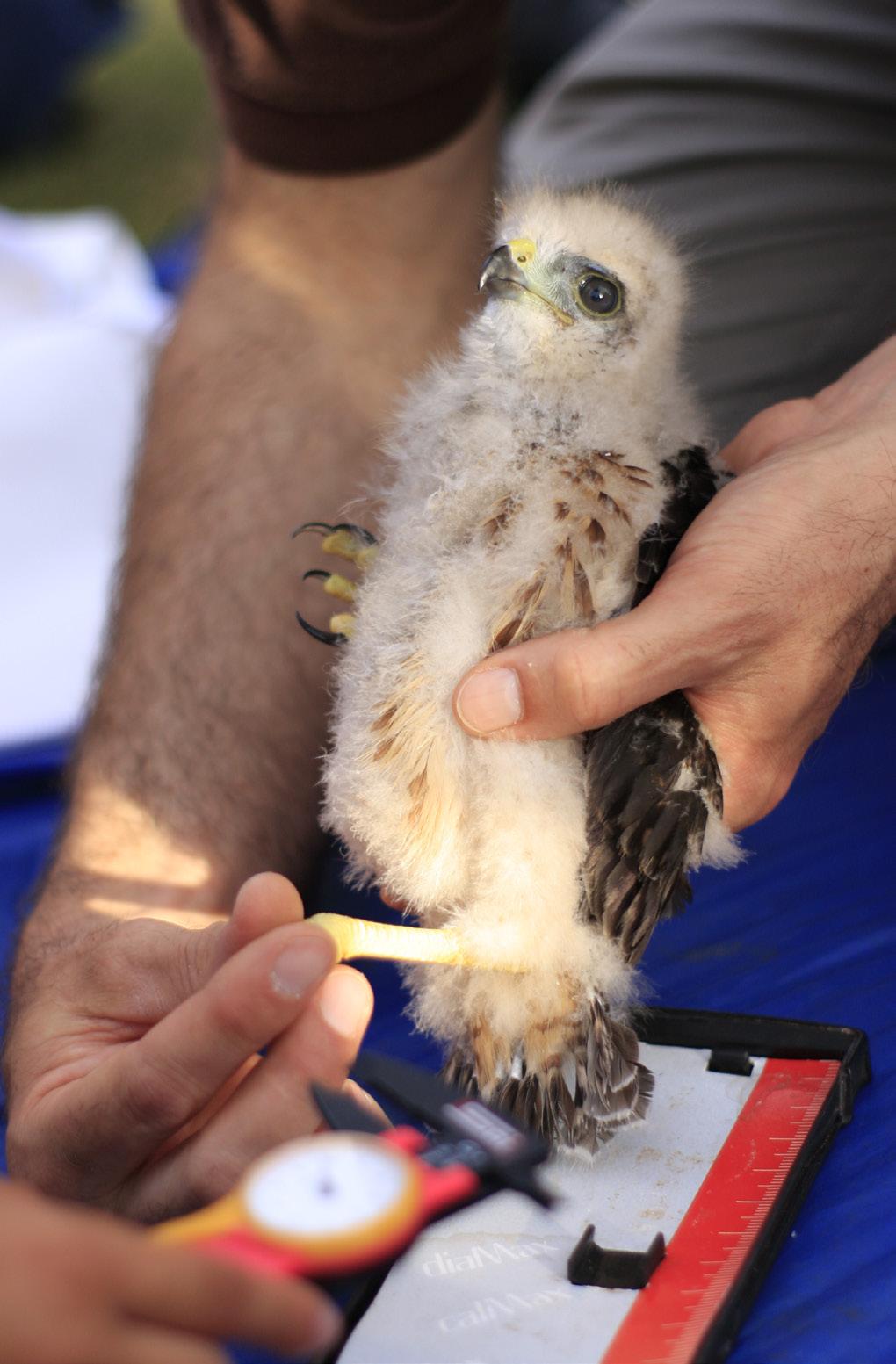
Just across the waters from our Dominican Republic Program, another dramatic comeback story is unfolding. The Puerto Rican Sharp-shinned Hawk a fierce, agile predator found nowhere else on Earth was once silently vanishing before our eyes. When The Peregrine Fund began monitoring these magnificent raptors in 2015, we uncovered a heartbreaking reality: only 75 individuals were documented by 2017, plummeting from 129 documented birds in 1994. As forests disappeared, hurricanes ravaged their habitat, and parasitic flies invaded their nests, these hawks faced a grim future. But nothing could have prepared us for what happened next. In September 2017, Hurricane Maria’s devastating 155 mph winds tore directly through Puerto Rico, decimating an already vulnerable population. When the skies finally cleared, we counted a mere 20 hawks standing at extinction’s doorstep.
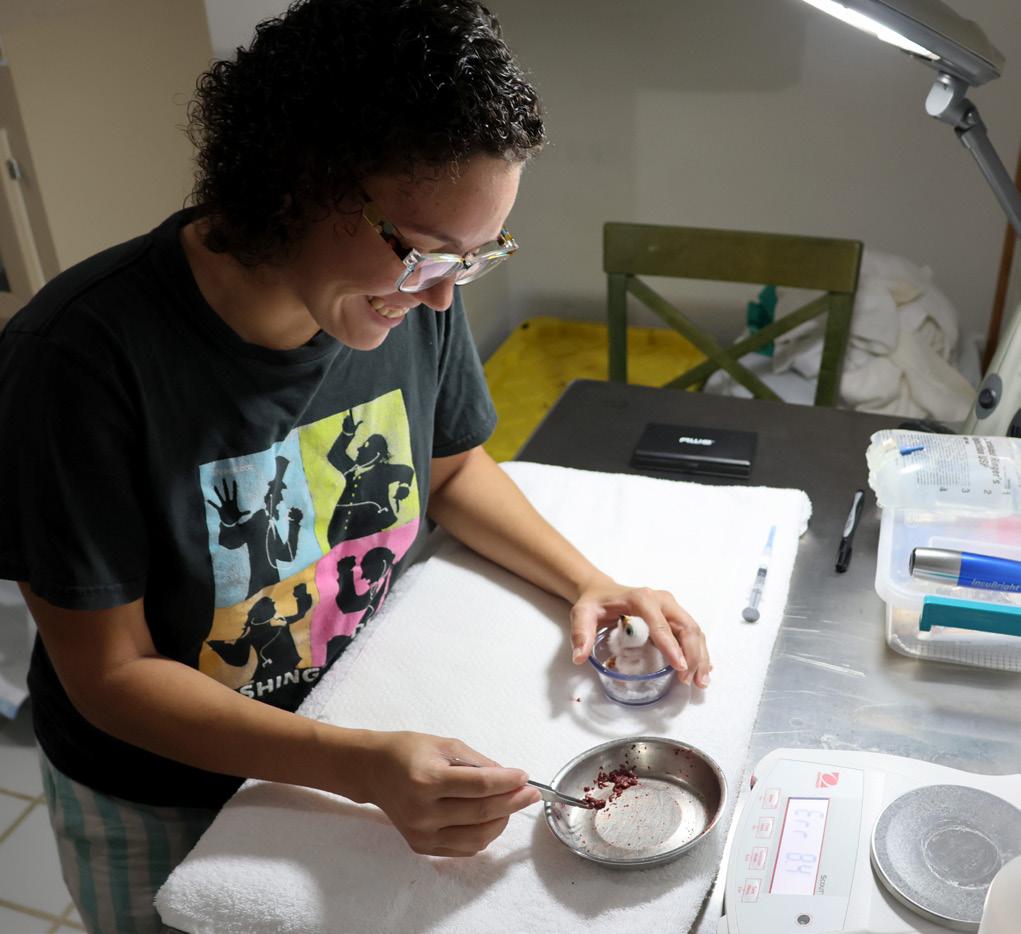
With time running out, our team launched an allhands-on-deck rescue mission in 2018. We utilized an approach called “double-clutching” a conservation strategy as clever as it is effective. Our field biologists, often scaling towering trees in difficult terrain, carefully locate and collect eggs from wild nests. These precious eggs are then hatched under expert care, and the young hawks are raised until they’re strong enough to survive on their own. Meanwhile, the wild parent pairs typically lay a second clutch of eggs which they raise
naturally. This effectively doubles the productivity of the wild hawks. Simultaneously, we tackled the insidious threat of parasitic nest flies with targeted treatments, dramatically boosting survival rates for wild nestlings.
Success came quickly, but raised new questions: Was our resource-intensive double-clutching still necessary? Could we achieve the same results with simpler methods? Our scientists didn’t guess they turned to the data. Five years of painstakingly collected field observations were fed into sophisticated population models to chart the most effective path forward. The verdict? Focus exclusively on nest management and suspend the labor-intensive double-clutching. Conservation victory achieved or so we thought. In 2023, disaster struck again when we witnessed unprecedented nestling mortality in wild nests. Our scientists immediately recalibrated, running fresh data through their models. The new analysis was clear: double-clutching wasn’t just helpful anymore it was essential for the species’ survival. This is adaptive management in action conservation that evolves with new information, never static, always responsive.
While our adaptive management model required implementing both approaches simultaneously, the work demanded resources far beyond most conservation budgets. That’s when Puerto Rico itself stepped up in a way few governments ever do. The Puerto Rico Department of Natural and Environmental Resources committed to covering nearly all operational costs and transforming what was possible. In an era when more than half of all raptor species worldwide face declining numbers, this level of governmental investment isn’t just helpful it’s revolutionary. Puerto Rico’s bold commitment to its natural heritage sets a powerful example for nations worldwide: the most effective conservation happens when governments champion their unique wildlife.
Today, the distinctive silhouette of the Puerto Rican Sharp-shinned Hawk can be glimpsed darting through forest canopies.

Today, the distinctive silhouette of the Puerto Rican Sharp-shinned Hawk can be glimpsed darting through forest canopies. While still Endangered, each successful fledgling represents a victory against extinction each hawk a testament to what happens when science, innovation, and governmental support converge. The future of Puerto Rico’s aerial predator now shines brighter, carried forward on the wings of collaboration and the unwavering dedication of those who refuse to let this irreplaceable raptor disappear.
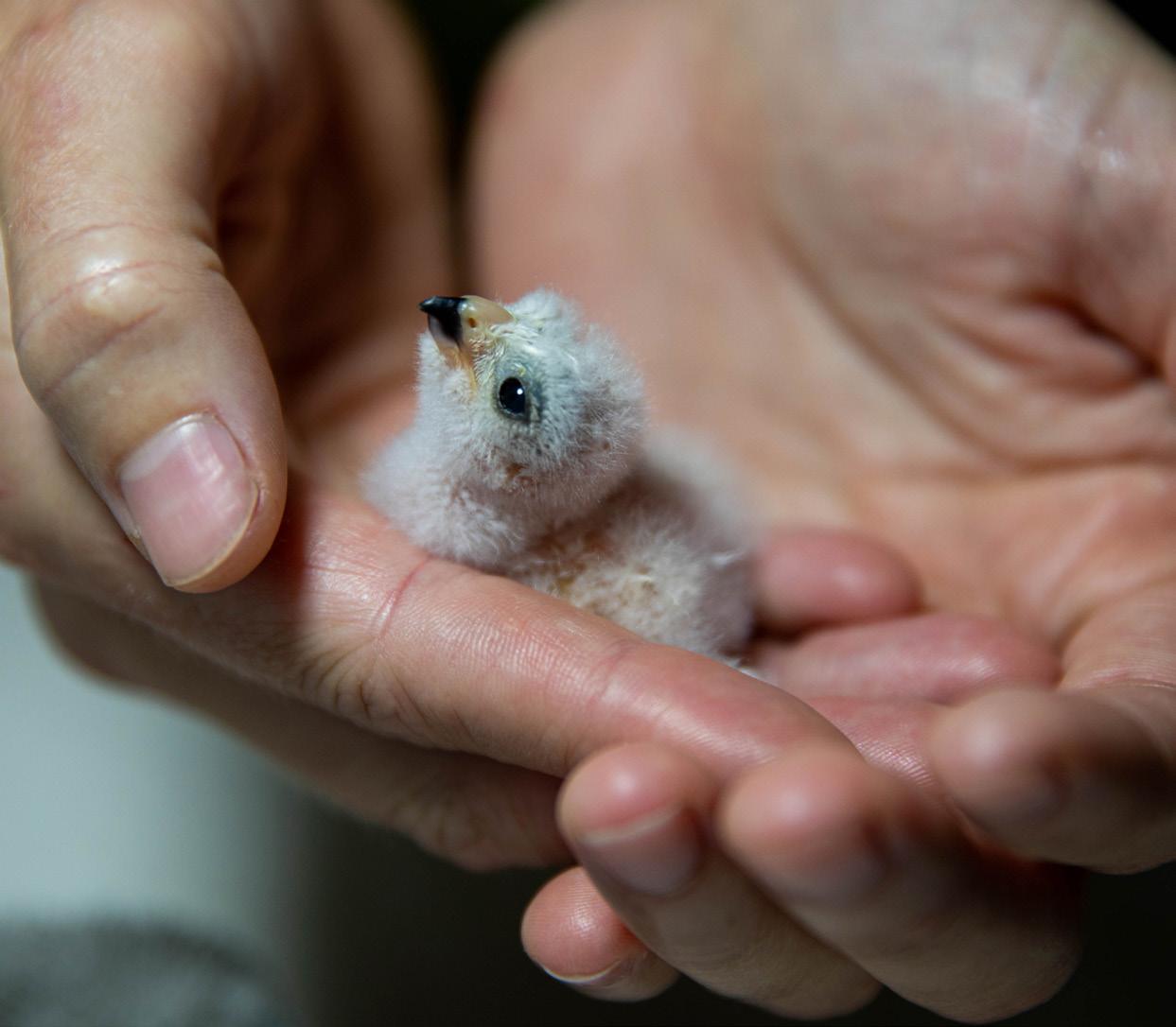


What a rollercoaster 2024 has been for our Africa Program! We kicked off January with a bombshell, a collaborative study co-led by our own Dr. Darcy Ogada that revealed what many had feared: Africa’s magnificent raptors are vanishing before our eyes. Published in the prestigious journal Nature Ecology & Evolution, the research compared road surveys from 1969 to 2020, painting a heartbreaking picture of widespread raptor declines across the continent over the last five decades. The findings were recognized widely in conservation circles, catching the attention of National Geographic and The New York Times, as well as major conservation bodies, including the United Nations’ Convention on the Conservation of Migratory Species of Wild Animals.

The message was clear: we need to protect Africa’s wild habitats, engage with the energy sector to improve infrastructure, enforce legislation, and most crucially develop interest and capacity for raptor conservation in Africa before it’s too late.
In response to the alarming findings, the study’s authors developed the African Raptor Leadership Grant, which supports educational and mentoring opportunities for emerging African scientists an investment in the future guardians of Africa’s skies. This year, we celebrated the first graduate, Joan Banda: a passionate researcher who studied at Nigeria’s AP Leventis Ornithological Research Institute. Joan’s research explored how traditional beliefs about owls impact their populations exactly the kind of local expertise we need to turn the tide.
Poisoning remains a silent killer of Africa’s vultures, often stemming from human-wildlife conflict. Our Coexistence Co-op Program, a partnership with Lion Landscapes, continues to tackle this threat head-on. Through community-based trainings, we’ve helped locals build over 2,000 improved bomas (livestock corrals) since 2018, dramatically reducing predator attacks and the retaliatory poisonings that often follow. The approach has been so transformative that we’ve now partnered with the North Carolina Zoo to bring these life-saving techniques to communities in Tanzania!
We need to protect Africa’s wild habitats, engage with the energy sector to improve infrastructure, enforce legislation, and—most crucially—develop interest and capacity for raptor conservation in Africa before it’s too late.
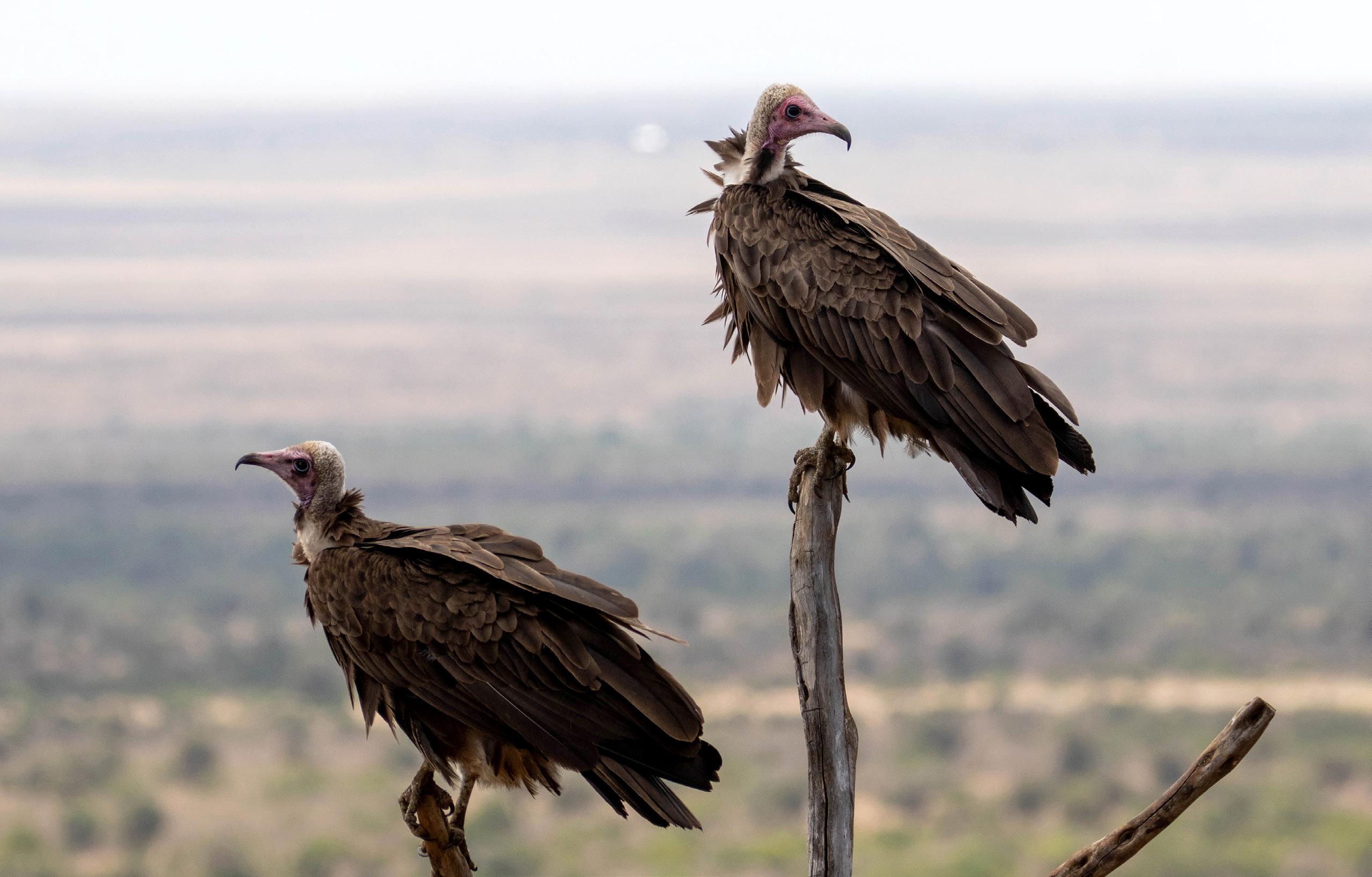
September 6th marked another milestone when our team helped launch Kenya’s Vulture Multi-species Action Plan a comprehensive 10-year strategy covering nine vulture species. Led by the Kenya Wildlife Service (KWS), this blueprint represents Kenya’s commitment to ensuring these essential scavengers don’t disappear from Africa.
If you thought 2024 was action-packed, just wait until you see what we have planned for 2025! Flip to the “What’s Ahead” section at the end of this report for a sneak peek at our ambitious initiatives in Africa.

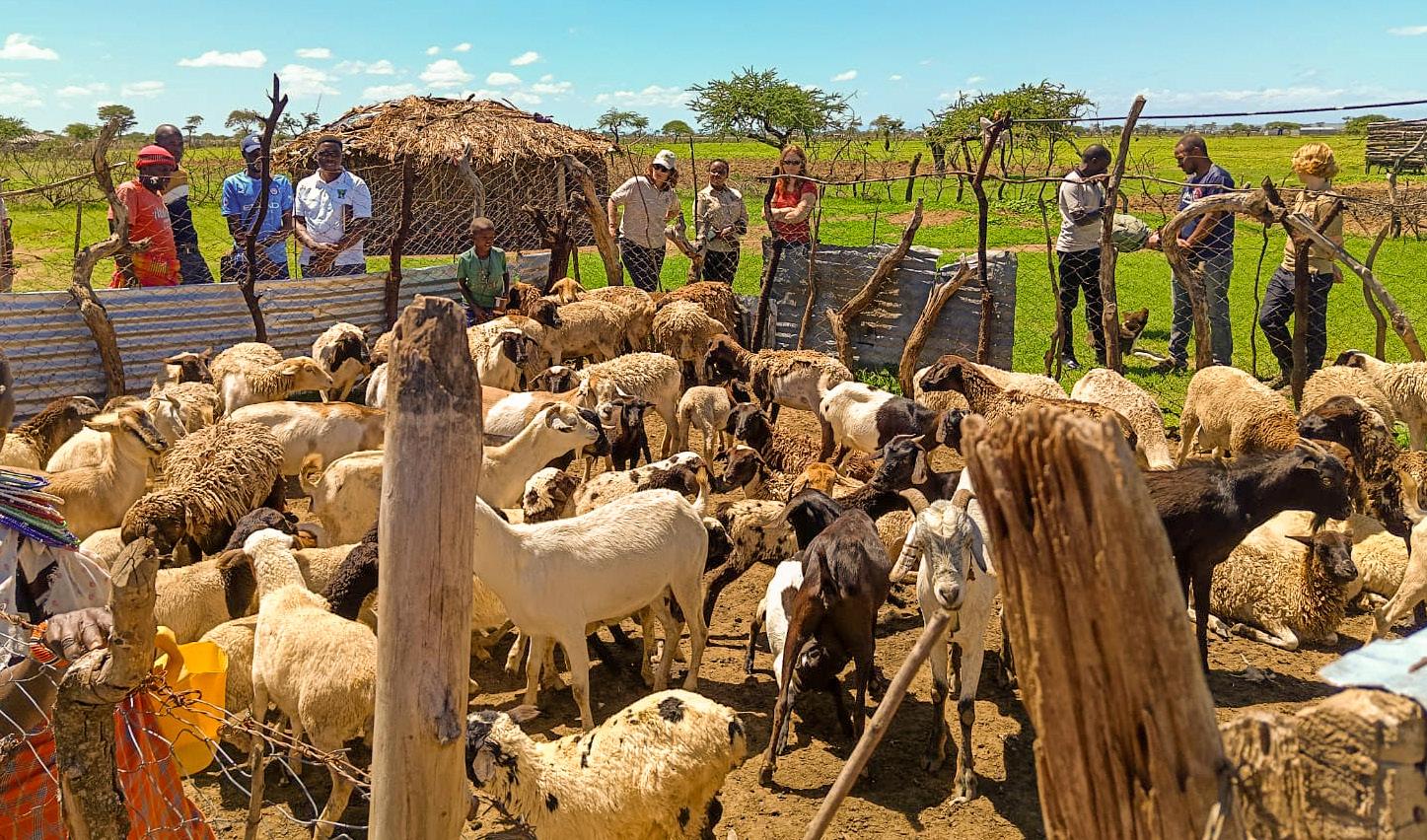
Since November 2012, The Peregrine Fund has partnered with White Sands Missile Range (WSMR) to study Golden Eagles, Birds of Conservation Concern facing numerous preventable human-related dangers. Our team braves challenging conditions to monitor their populations, assess their response to disturbance, and track their movements.

We’ve expanded our research to include scavenger studies, painting a comprehensive picture of the ecosystem. By understanding how contaminants move through the food chain, we are better able to protect entire wildlife communities.
The knowledge gathered informs wildlife and resource conservation while maintaining the military mission and provides a blueprint for global raptor conservation initiatives. It proves that with dedication and scientific rigor, we can create a world where eagles continue to soar freely, balancing military operations with wildlife conservation.
High above the windswept tundra of western Alaska, a silent sentinel perches the magnificent Gyrfalcon, largest of all falcons and master of the Arctic realm. For more than ten years, The Peregrine Fund’s dedicated researchers have braved one of Earth’s most unforgiving environments to document a troubling transformation.
Climate change is among the most pressing conservation concerns of our time, and the accelerated changes in the Arctic provide a fleeting opportunity to understand the complicated impacts on raptor communities. In 2024, researchers witnessed belowaverage raptor occupancy and breeding success and developed statistical models that clearly show that prolonged rains and higher temperatures batter vulnerable nestlings, significantly decreasing their survival. As the Arctic continues to see wetter and hotter summers, these findings are a sobering glimpse into what climate models predict will become increasingly common.
Further complicating this ecological story is the specter of novel diseases like Highly Pathogenic Avian Influenza, which likely compounds conservation
challenges for these remarkable birds. Climate change has created a perfect storm of threats that underscores why this decade-long research initiative has become increasingly urgent.
The Gyrfalcon & Tundra Conservation Program stands as our essential early warning system, documenting how apex predators respond to unprecedented environmental shifts and providing critical insights that will help secure not just Arctic raptors, but ecosystems worldwide facing similar climate challenges.

Freyja and Salix Join the Flock: Our Newest Feathered Ambassadors
The moment you lock eyes with a raptor, something magical happens. At the World Center for Birds of Prey, our live Avian Ambassadors don’t just educate they transform visitors into lifelong conservation champions. In 2024, two charismatic newcomers swooped into our hearts: Freyja, a regal Gyrfalcon with piercing eyes and an imperious demeanor, and Salix, a heart-melting Common Barnowl whose silent flight leaves audiences breathless.
Freyja isn’t just stunning she’s a powerful messenger for our Gyrfalcon & Tundra Conservation Program, bringing our climate change research in Alaska to life through her commanding presence. Meanwhile, Salix, with his ghost-like appearance and otherworldly expressions, delivers a sobering reality check about how rodenticides and environmental contaminants threaten raptors worldwide.
Both birds have mastered the art of stealing the spotlight during educational programs. Be sure to come out this year to meet our newest ambassadors!



into the Marcia and Bob Ross Gallery inside the Velma Morrison Interpretive Center, and you’ll discover where artistic passion meets raptor conservation. This isn’t just any gallery it’s a rotating celebration of artists who capture the soul and spirit of birds of prey.
Boise’s own artistic treasures Norm Nelson, Robin Coen, and Ava Terrell have transformed blank canvases into windows to the raptor world, each piece revealing the fierce beauty of these aerial predators. Through the camera lenses of Andy Orr, Bill Saltzstein, and Linda Ledbetter, visitors experience heartstopping moments frozen in time a diving falcon, a hunting owl, the intensity of a eagle’s gaze creating connections that words alone cannot express.
Each exhibition does more than display art; it ignites a passion for raptor conservation that visitors carry long after they leave the gallery.
In the rugged foothills of the Himalayas, where ancient forests meet misty peaks, a threatened predator soars largely unseen and unstudied. The Near Threatened Mountain Hawk-eagle faces mounting pressures as human development encroaches on its domain. Until now, this raptor’s story has remained largely untold but that’s about to change.
We are proud to partner with Sandesh Gurung, a Nepalese researcher who will be pursuing his PhD from Wageningen University, Netherlands, with support from The Peregrine Fund.
Sandesh’s groundbreaking research tackles two critical threats facing these magnificent birds. First, he’s investigating how deforestation impacts their range, population, and feeding patterns. Second, he’s examining human–wildlife conflict, specifically when and why these eagles prey on domestic poultry and what triggers retaliatory killings by local farmers.

By researching these threats on what is an elusive and uncommon forest raptor, he hopes to answer questions relevant for the conservation of many of the most threatened forest raptor species on Earth.
This work isn’t just about protecting a single species. It represents our commitment to nurturing the next generation of conservation leaders in biodiversity hotspots worldwide. By empowering local experts like Sandesh with scientific training and resources, we’re building sustainable conservation networks in the places that need them most.
The knowledge gap Sandesh aims to close will provide the foundation for evidence-based protection of these raptors and their fragile ecosystem for generations to come. Through his eyes, we glimpse not just the future of the Mountain Hawk-eagle, but the future of conservation itself.
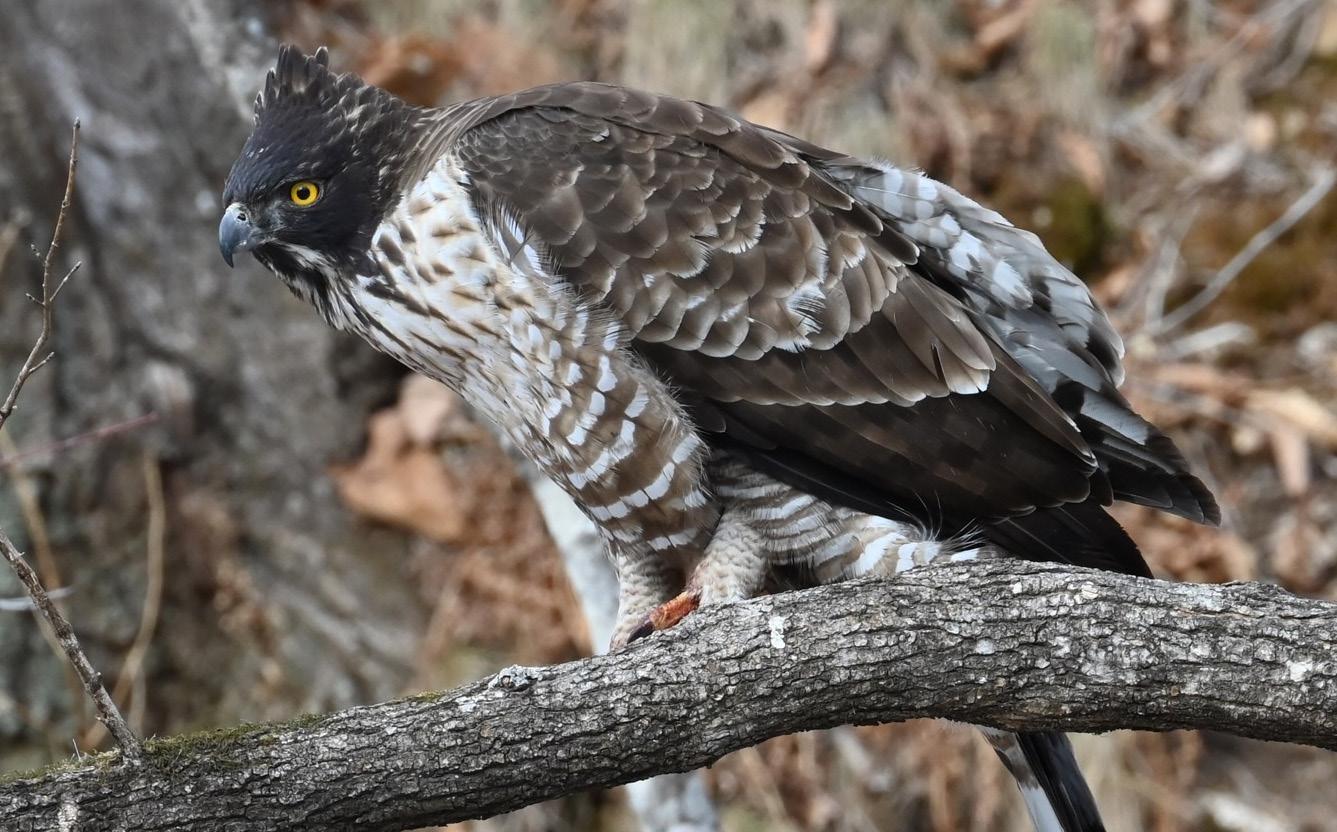


In February 2024, our brilliant Puerto Rico Program Director Hana Weaver received international recognition as a 2024 Future for Nature Award winner! This coveted accolade celebrates young conservation heroes making a real-world impact in protecting wild species and nobody embodies this spirit more than Hana.
For seven remarkable years (and counting), Hana has poured her heart, soul, and expertise into an extraordinary mission: rescuing the Puerto Rican Sharp-shinned Hawk from the very edge of extinction. Her unwavering dedication has transformed from a passionate commitment into a conservation success story that is capturing global attention.
Alongside two fellow conservation champions, she was honored at the Future for Nature Awards
Looking at all the incredible nominees, I am beyond humbled to be picked as one of the awardees. I am completely over the moon and thrilled about the opportunities that this award will make possible for the Puerto Rico team.
Hana Weaver
Puerto Rico Program Director
Ceremony on April 19th in the Netherlands, where each winner received a game-changing 50,000 euros to fuel their vital work. The prize money is already powering the project: we are investing directly in Puerto Rico’s local conservation talent through specialized training programs, equipping field teams with essential gear, and amplifying community awareness about this magnificent raptor and its fight for survival.
Like the rare hawk she protects, Hana exemplifies resilience, vision, and the remarkable impact one determined person can have on our natural world!
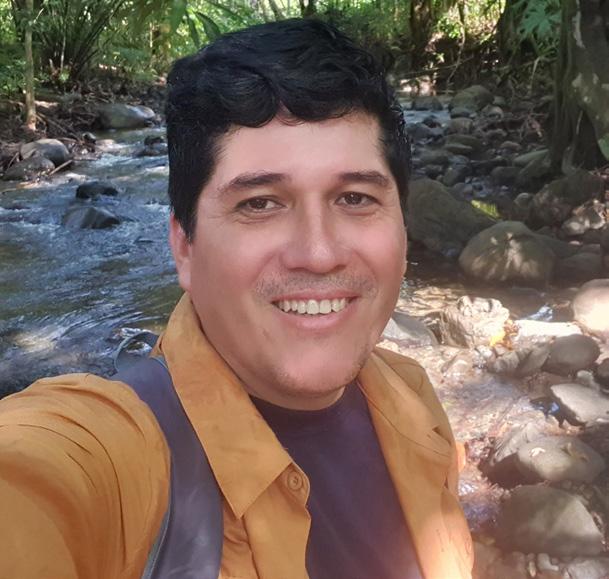
We wrapped up 2024 with the remarkable news that our passionate Panama Program Manager
José de Jesús Vargas González was named a National Geographic Explorer.
José joins an elite nest of talent at our organization, becoming the third current team member to earn the title alongside Northeast Africa Program Director Dr. Darcy Ogada and Madagascar Program Director Dr. Lily-Arison Rene de Roland.
The National Geographic Society’s Committee for Research and Exploration didn’t just recognize José’s vision they backed it with funding to support the groundbreaking Mentorship Network for Harpy Eagle Conservation in the Darien region of Panama. This
initiative focuses on creating a unique, Indigenous-led mentorship network.
José’s new distinction as a National Geographic Explorer will open doors to a global network of explorers, enabling powerful collaborations with conservation visionaries worldwide to amplify the project’s impact.
These mentors will share their ancestral knowledge about the Harpy Eagle, the forest, and conservation while gaining new skills for biodiversity protection. This bottom-up approach seeks to empower local communities by respecting their culture and traditions, integrating ancestral practices with modern conservation strategies.
José de Jesús Vargas González
Panama Program Manager
The Peregrine Fund’s derived audited financial statements contain an unqualified opinion. Complete audited financial statements are available at peregrinefund.org/financials or may be obtained by contacting The Peregrine Fund’s Accounting Department, 5668 W Flying Hawk Lane, Boise, ID 83709. The Peregrine Fund is proud to partner with and be recognized by:




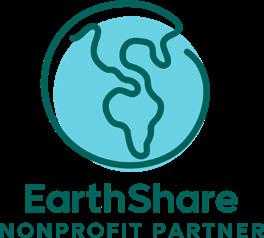
Behind every great conservation story lies passionate individuals with a vision and The Jeremy and Amy Hanks Foundation embodies this perfectly. The mission of the foundation is to identify and support organizations demonstrating true excellence in conservation and cultural enrichment. The Peregrine Fund stands proudly among their chosen partners a recognition that speaks volumes about our shared commitment to protecting birds of prey.
It started with a Peregrine Falcon named Goose. We met her face-to-face many years ago at the Natural History Museum of Utah. It was one of those experiences that stuck with us, not least because, as anyone who has been up close to a magnificent bird of prey can tell you, we weren’t entirely sure that she wasn’t plotting our demise. That chance encounter led us to participate in citizen science kestrel nest box monitoring with our kids, and eventually, we wanted to donate to support the American Kestrel Partnership and The Peregrine Fund.
We like to joke with people that if Mother Nature needed to select just a single representative, it’d likely be a bird of prey. Hawks, falcons, eagles, vultures, owls, and their cousins have been revered and admired for millennia. They are also indicator species that sit atop their food chains, and if something is off, they’ll be the first to show it.
Bird of prey conservation is also an area where we humans have not only stemmed the tide but completely turned it around on itself! We almost lost the Peregrine Falcon, but a dedicated group of inspired falconers and scientists addressed the DDT threat and started a captive breeding program, all actions that led to the Peregrine Falcon’s full recovery.
We are in awe of the results that The Peregrine Fund has accomplished in the past and are humbled to be able to support the efforts they’re engaged in now and in the future. Especially in regards to the California Condor; hopefully, another species that with diligence and time, we will bring back from the brink! The Peregrine Fund’s focus on science, education, conservation, and consensus building gives us strong hope that they will continue to conserve birds of prey around the globe!

Jeremy and Amy Hanks
The Jeremy and Amy Hanks Foundation


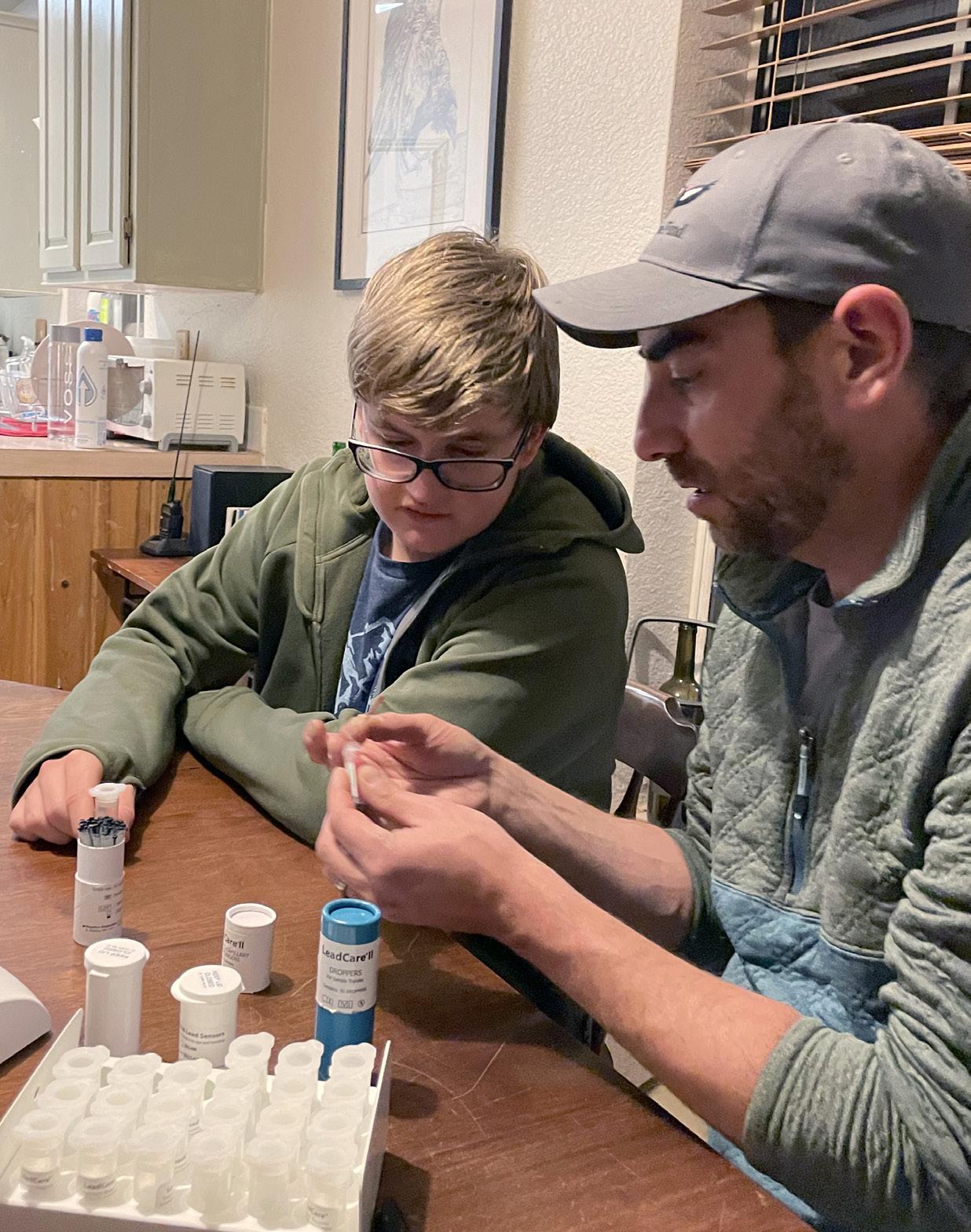
Your gift matters. Effective and sustainable conservation takes decades to achieve. There is no instant success when it comes to saving species. Your investment addresses the continuing threats these birds face through sound science and adaptive management. By including The Peregrine Fund in your philanthropic plans, you are investing in the future of birds of prey and the landscapes we all share. Individually we are strong, together we are unstoppable.
Visit peregrinefund.org/financials or scan the QR code to view the 2024 Leadership Council, Legacy Circle, & Memorial Gifts
Thank you for leading the way with your gifts of $1,000 – $9,999. Learn more at peregrinefund.org/leadership-council
Commitments to conservation that inspire future generations. Learn more at peregrinefund.planmylegacy.org
Gifts for education, scholarships, hands-on training, and mentorship to empower the next generation of raptor scientists. Learn more at peregrinefund.org/building-leadership
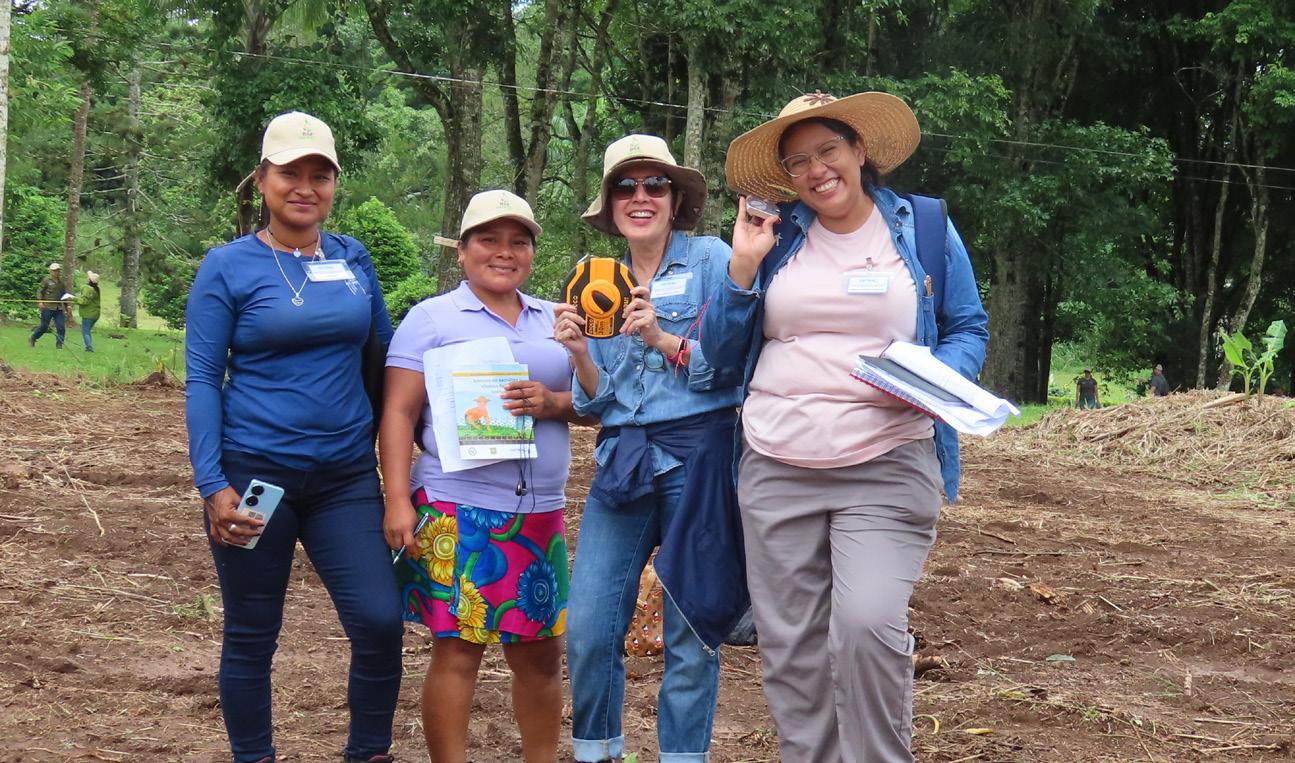

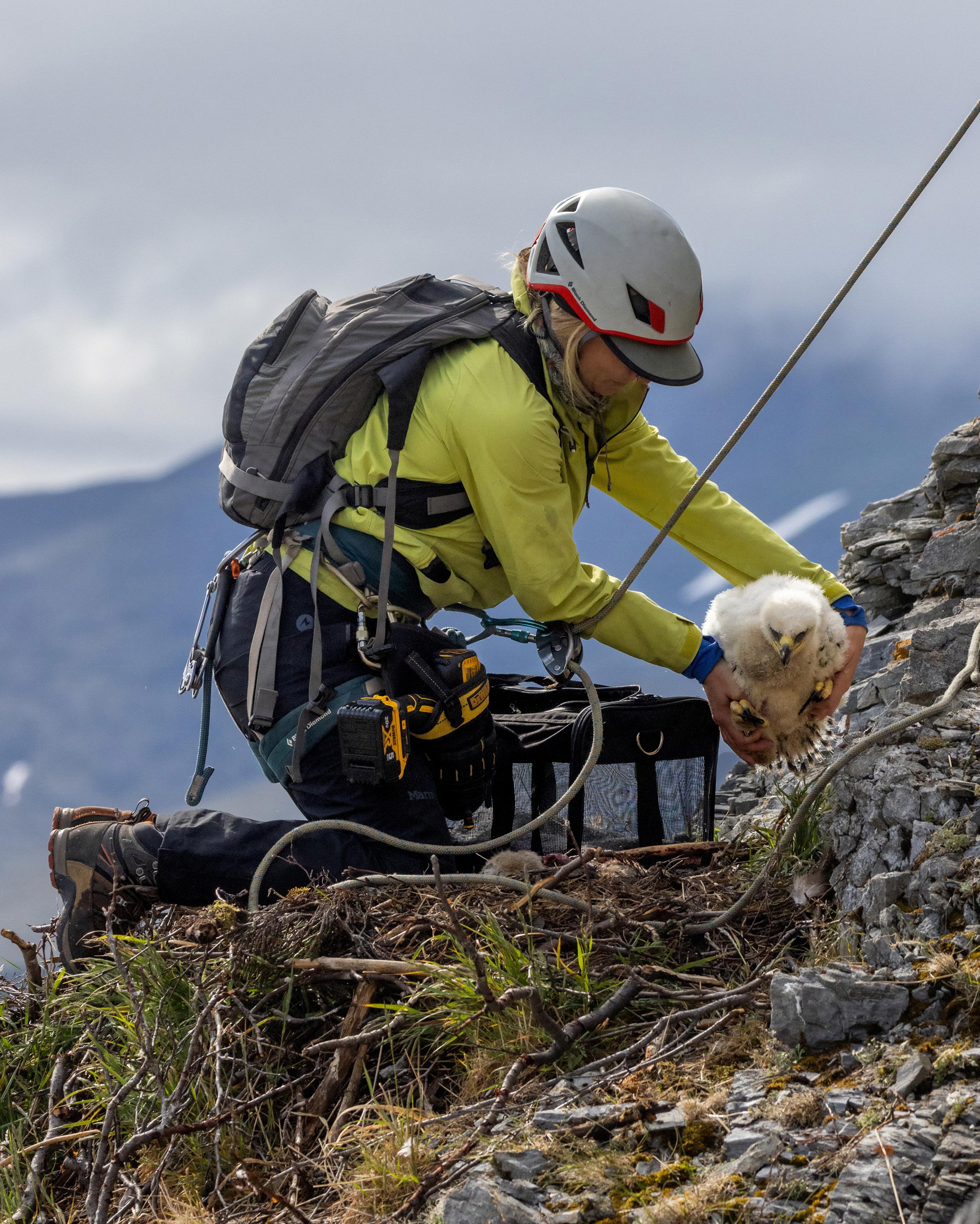
TOGETHER, WE SOAR! In another year marked by incredible growth, The Peregrine Fund expanded even further in 2024, elevating our conservation impact to extraordinary new heights.
Behind every successful rescue and conservation victory stands our exceptional team of raptor experts and enthusiasts. From brilliant scientists and dedicated field teams to skilled propagation specialists and administrative staff— we’ve assembled a constellation of talent united by passion.
Note: Directory includes all staff from January 1, 2024 –December 31, 2024.
Stephanie Ashley Curator of Birds
Kara Beer
Field Crew Lead, Gyrfalcon & Tundra Conservation Program
Briana Bode Field Biologist, California Condor
Erin Brannon
Senior Field Biologist, California Condor
Jordan Briscoe Technical Support & Systems Specialist
Joell Brown Vice President of Administrative Operations
Evan Buechley, PhD Vice President of Conservation–International Programs
Brendan Burns Propagation Intern
John Clare, PhD Quantitative Ecologist
Christine Coates Director of Operations
Rachel Daniel Raptor Specialist I
Matthew Danihel Digital Content Manager
Sam Davila Facility Maintenance
Anne Dixon Design Manager
Leah Dunn
Database Architect
Leah Esquivel
Propagation Program Director
Curtis Evans Education Manager
Shawn Farry Program Manager, California Condor
Kirsten Fuller Field Biologist, California Condor
Julio Gallardo, PhD
Conservation Biologist–International Programs
Brian Gloshen Facility Maintenance
Jessica Gordon Volunteer Program Manager
Zach Gorman Field Biologist, Golden Eagle
Carolina Granthon
Research Coordinator
Jeffrey Grayum
Conservation Field Biologist
Tiéra Guereña Grants Coordinator
Chelsea Haitz
Propagation Program Manager
Amanda Hancock Raptor Specialist
Tim Hauck
California Condor Program Director
Thomas Hayes
Ridgway’s Hawk Program Director
Michael Henderson
Conservation Program Manager, Gyrfalcon & Tundra
Lily Hodgson
Education Coordinator
Thomas Hudson Conservation Field Biologist
Bailey Humphrey Sales Associate II
Jeff Johnson, PhD Senior Scientist
Paul Juergens Vice President of Conservation–Domestic Programs
Stephanie Krueger Director of Human Resources
Craig Lochner Director of Accounting
Jim Long Staff Accountant
Stephanie Low Sales Associate II
Tate Mason Director of the World Center for Birds of Prey
Jennifer McCabe, PhD Spatial Ecologist
Christopher McClure, PhD Executive Vice President of Science & Conservation
Brianne Melendez Payroll Administrator
Mindy McNelis Payroll Administrator
Heather Meuleman Vice President of Development
Heather Morris Field Biologist, California Condor
Molly Mundell Sales Associate
Brian Mutch Aplomado Falcon Program Director
Jane Naillon Director of Brand & Communications
Emily Nelson Event Coordinator
Tom O’Handley Director of East Coast Initiatives
Doreen O’Skea Development Director
Geoffrey Pampush Advisory Senior Vice President–Policy & Philanthropy
Chris N. Parish President & CEO
Christina Puleo Sales Associate II
Sara Remmes Propagation Specialist
Alex Roberts Constituent Relationship Manager
Brian Rolek, PhD Quantitative Ecologist
Taylor Rolison System Administrator & Business Liaison
Jessica Schlarbaum Public Information Officer
Brett Sebring Senior Systems Engineer
Jeffrey Sheen Front Office Coordinator
Vincent Slabe, PhD Energy Scientist
Kim Smith Sales Associate II
Jadn Soper Raptor Specialist II
Heather Springsteed Grants Administrator & Registrar
Paul Spurling Director of Technology
Kelsey Tatton Propagation Specialist
Neil Thagard
Program Manager, North American Non-Lead Partnership
Rebecca Thomas-Kuzilik Sales Associate I
Russell Thorstrom
Conservation Director, Madagascar & West Indies
Eddie Wallace
Membership Manager
Sean Watson Sales Manager
CJ Woodward
Field Biologist, California Condor
Aaron Wuori Propagation Specialist
Tina Yonan Sales Associate I
Daniel Young Brand Manager
Amber Zelmer Propagation Specialist
Amanda Young Echeverria Field Biologist (seasonal)
Elly McManus Field Biologist (seasonal)
Nashally A. Folch Mercado Field Coordinator
Sarah Montalvo Field Biologist (seasonal)
Melissa Murillo Program Manager
Kathrine O’Connell Field Biologist (seasonal)
Isamar M. Flores Rodriguez Project Coordinator
Hana C. Weaver Puerto Rico Program Director
Nikki Zuber Field Biologist (seasonal)
DOMINICAN REPUBLIC
Carlos Linares Agramonte Field Technician
Franklin Cabrera Alvarez Field Technician
Chiara Perozo Caceres Field Curator
Ivelina Mendoza Campos Field Technician
Albin Luis Cepeda Field Curator
Daniel Alcantara Cepedes Field Technician
Juan Valentin Cespedes Field Technician
Nicauris Bautista de la Cruz Environmental Educator (part-time)
Marta Curti Hispaniola Program Director
Alberto Andujar Franco Field Technician
Pastor De Leon Franco Field Technician
Ariel Ozoria Garcia Field Technician
Yomarco Tejeda Garcia Field Technician
Fernando Gonzalez Field Technician
Daniel Rodriguez Hernandez Field Technician
Odaly Vasquez Heredia Field Technician
Samuel Cordero Linares Field Technician
Escarlin Hernandez Maria Environmental Educator (part-time)
Yerry Kerly Kory Maria Field Technician
Damaris Jacinto Marte Women in Conservation Fellow (part-time)
Jesus Concepcion Melo Field Technician
Oscar Mejia Mosquea Field Technician
Alexander Vasquez Perez Field Technician
Mariela Vasquez Perez Field Technician
Hilario Jorge Polanco Field Technician
Arelys Jimenez Puello Environmental Educator (part-time)
Gabriel Jimenez Puello Field Technician
Julio Cesar Sierra Rodriquez Field Technician
Modesto Balbuena de la Rosa Field Technician
Carlos Iván Suárez Sánchez Field Technician
Kelvin Alejandro Garcia Sosa Field Technician
Abrahan de Leon Tejada Field Technician
Gabriela Diaz Valenzuela Field Technician
Eliseo de Leon Valga Field Technician
Juan Agramonte Vargas Field Technician
Estefany Sanchez Vasquez Environmental Educator (part-time)
Maria Magdalena Vasquez Field Technician (part-time)
Franklin Rodriguez Zorrilla Field Technician
Jairo Bailarin Field Technician
David Bejerano Project Coordinator
Darisnel Carpio Administrative Coordinator
Joselincio Chamarra Field Technician (part-time)
Calixto Conampia Field Project Coordinator Assistant
Pascual Dogirama Field Technician
Wilberto Dogirama Field Technician (part-time)
Nercio Flaco Field Technician
José de Jesús Vargas González Program Manager, Founder of Fundación Rapaces y Bosques de Panamá
Polo Grajales Field Technician
Edixon Grajales Field Technician
Arilio Ismare Field Technician
Indalecio Mecheche Field Technician
Dilmo Mepaquito Field Technician
Fernando Quintana Field Technician
Efrain Salina Field Technician
Erenia Tocamo Field Technician (part-time)
Abdiel Tunay Field Technician
*All team members collaborate with The Peregrine Fund via Fundación Rapaces y Bosques de Panamá
Hernán Vargas, PhD Conservation Director–Neotropical Programs
Ralph Buij, PhD Senior Scientist
KENYA
Faith Achieng Project Coordinator
Michelle Behr Office Manager
Alfred Koech Senior Education Officer
Benjamin Lemein Raptor Nest Monitor
Kelvin Ntina Murasimi Vulture Liaison Officer
Abraham Loomuna Nkumama Vulture Conservation Officer
Valerie Nasoita Vulture Liaison Officer
Alex Nawoi Community Liaison Officer
Martin Odino Project Manager
Darcy Ogada, PhD Northeast Africa Program Director
Eric Ole Reson Project Coordinator
Geraldine Rotich Education Officer
Isaac Mpepedoi Tarayia Raptor Nest Monitor
Tolojanahary Richard Anderson Andriamalala Biologist
Theophile Bereny Andrianantenaina Field Technician
Adrien Batou Field Technician
Augustin Noel Bonhomme Field Technician
Eloi (Lala) Fanameha Field Technician
Jean Louis Andry Hiankinantsoa Driver
Jaomizara Field Technician
Patrice Jaozoky Field Technician
Njarasoa Nomenjanahary Security Guard
Eugene Ladoany Field Technician
Kalavah Rox Loukman Field Technician
Jules Mampiandra Field Technician
Jean Clé Mbohoavy Field Technician
Fanambina Mbohonavy (Salamany) Field Technician
MoЇse Field Technician
Monesse Field Technician
Samson Prosper Lovasoa Nambena Field Technician
Thomas Ndriamiadana Social Organizer
Yverlin Zito Michel Pruvot Supervisor
Charles (Vola) Rabearivelo Security Guard
Arson Stanislas Rabemananjafy Field Technician
Clariat Rabevoninahitra Researcher
Emilienne Vao Raharindrina (Nirina)
Office Maintenance/ Housekeeper
Jeannette Rajesy Administrative Coordinator
Bodoeliarilala Rakotondraoelin Housekeeper
Rakotondrasoa Anjaratiana
Administrative Coordinator
Marius P.H. Rakotondratsima Scientific Coordinator
Michel Rakotoson, PhD Geographer & Social Worker
Juliot Carl Ramamonjisoa, PhD Biologist
Olivier Ramamonjisoa Field Technician
Odily Ramiandrazafy Field Technician
Alain Randriamampionona Field Technician
Heritiana Josoa Randriamanantena, PhD Biologist & Data Officer
Bruno Randrianarimanana Security Guard
Jean Louis Randrianarison Field Technician
Donatien Randrianjafiniasa Social Organizer
Gaston Raoelison Field Technician
Nomenjanahary Christophe Rarovaniaina Security Guard
Norisla Claugine Rasoaherinirina Accountant
Julien Emile Ratongalaza Field Technician
Tokiniaina Julien Ravelonjato Field Technician
Thomas Aristide Ravelonjatovo Social Organizer
Radoniaina Razafiherison Technical Manager
Gilbert Razafimanjato Mandrozo PhD Supervisor & Senior Scientist
Jela Razafindrakotovahoaka Field Technician
Erno Razafindratiana Social Organizer
Andrianarijaona Razafy Accountant
Stephanie Razakaratrimo, PhD Communication
Tsirihanitra Olivia Razanajafy Assistant Housekeeper
Lily-Arison Rene de Roland, PhD Madagascar Program Director
Sebastien Herbalien Tongamarina Social Organizer
Seraphin Fabrice, PhD Biologist
Rodien Solay Field Technician
Gilbert Tiandraza Field Technician
Gilbert Tohaky Field Technician
Soalihy Tongamoelinakily Field Technician
Reno-Kid Volazafy Field Technician
Tsiafify André Rakotovaoniaina Field Technician
BOARD OF DIRECTORS OFFICERS
Carter Montgomery Chair
Managing Partner | HopeRocks Partners
Scott A. Crozier Vice Chair
General Counsel Concierge
Chris N. Parish
President & CEO
The Peregrine Fund
Tim Wilcomb Treasurer
Principal/President | JordanWilcomb Construction, Inc.
Samuel Gary, Jr.
Secretary
President | Samuel Gary, Jr. & Associates, Inc.
Lee M. Bass
Chair Emeritus
President | Lee M. Bass, Inc. BOARD
Robert B. Berry
Trustee | Wolf Creek Charitable Foundation, Falcon Breeder and Conservationist
Harry L. Bettis Rancher
Rob Bierregaard, PhD
President | Raptor Research Foundation
P. Dee Boersma, PhD
Professor of Biology | Washington Wadsworth Endowed Chair in Conservation
L. Michael Bogert
Attorney | Parsons Behle & Latimer
Anne Brown
Executive Director | Texas Parks & Wildlife Foundation
Virginia H. Carter
Natural History Artist and Environmental Educator
Robert S. Comstock
Fashion Designer | Robert Comstock Company
Ralph H. Duggins
Senior Counsel | Cantey Hanger, LLP
Caroline A. Forgason
Partner | Groves-Alexander Group LLC
Victor L. Gonzalez
President | Windmar Renewable Energy
H. Dale Hall
CEO (Retired) | Ducks Unlimited, Director | US Fish and Wildlife Services (Retired)
Karen J. Hixon
Conservationist and Rancher
Grainger Hunt, PhD
Senior Scientist Emeritus (Retired) | The Peregrine Fund
J. Peter Jenny
President & CEO (Retired) | The Peregrine Fund
Thomas Jensen Partner | Perkins Cole
Jay L. Johnson
Admiral | US Navy (Retired), Former Chief of Naval Operations
Natalie Kaddas
President & CEO | Kaddas Enterprises
Dirk A. Kempthorne
Former Idaho Governor, Former Secretary of the Interior
Therese M. Lawless
Attorney | Lawless, Lawless & McGrath
Steve Lawrence Philanthropist
Carolynn D. Loacker Vineyard Owner and Philanthropist
Helen MacDonald
Writer, Naturalist and Affiliated Research Scholar | University of Cambridge Department of History and Philosophy of Science
William McGee
Associate | MPK Equity Partners
Mark C. McKinley Managing Partner | MK Resources LLC
Alfredo Miguel President | Bell Helicopteros Mexico
Brian A. Millsap, PhD Affiliated Faculty | New Mexico State University, Department of Fish, Wildlife and Conservation Ecology
Abrose K. Monell
President & Trustee | The Ambrose Monell Foundation and the G. Unger Vetlesen Foundation
S. Reed Morian
Chairman | Texas Paks and Wildlife Commission, Chairman/ CEO | DX Service Company Inc.
Matthew Myers Cox School of Business, Dean Southern Methodist University
Calen B. Offield Director | Offield Family Foundations, Photographer
Catherine Stevens
Attorney | Mayer Brown
Greg Strimple President | GS Strategy Group
CeCe Stuller
Trustee | Stuller Family Foundation and Philanthropist
R. Beauregard Turner Fish & Wildlife Manager and Director of Natural Resources | Turner Enterprises, Inc.
Jalso Urubshurow Rounder & CEO | Namdic Expeditions
James D. Weaver
President | Grasslans Charitable Foundation, Rancher
EMERITUS
Ian Newton, D.Phil., D.Sc., FRS. Director Emeritus with Distinction, Senior Ornithologist (Retired) | Natural Environment Research Council, United Kingdom
Mark R. Fuller, PhD Scientist Emeritus | United States Geological Survey (USGS)
Patricia B. Manigault Philanthropist
Lucia Liu Severinghaus, PhD Biodiversity Research Center (Retired) | Academia Sinica, Taiwan
Our scientists were busy in 2024, as evidenced by the 20 scientific publications released. Check them
out:


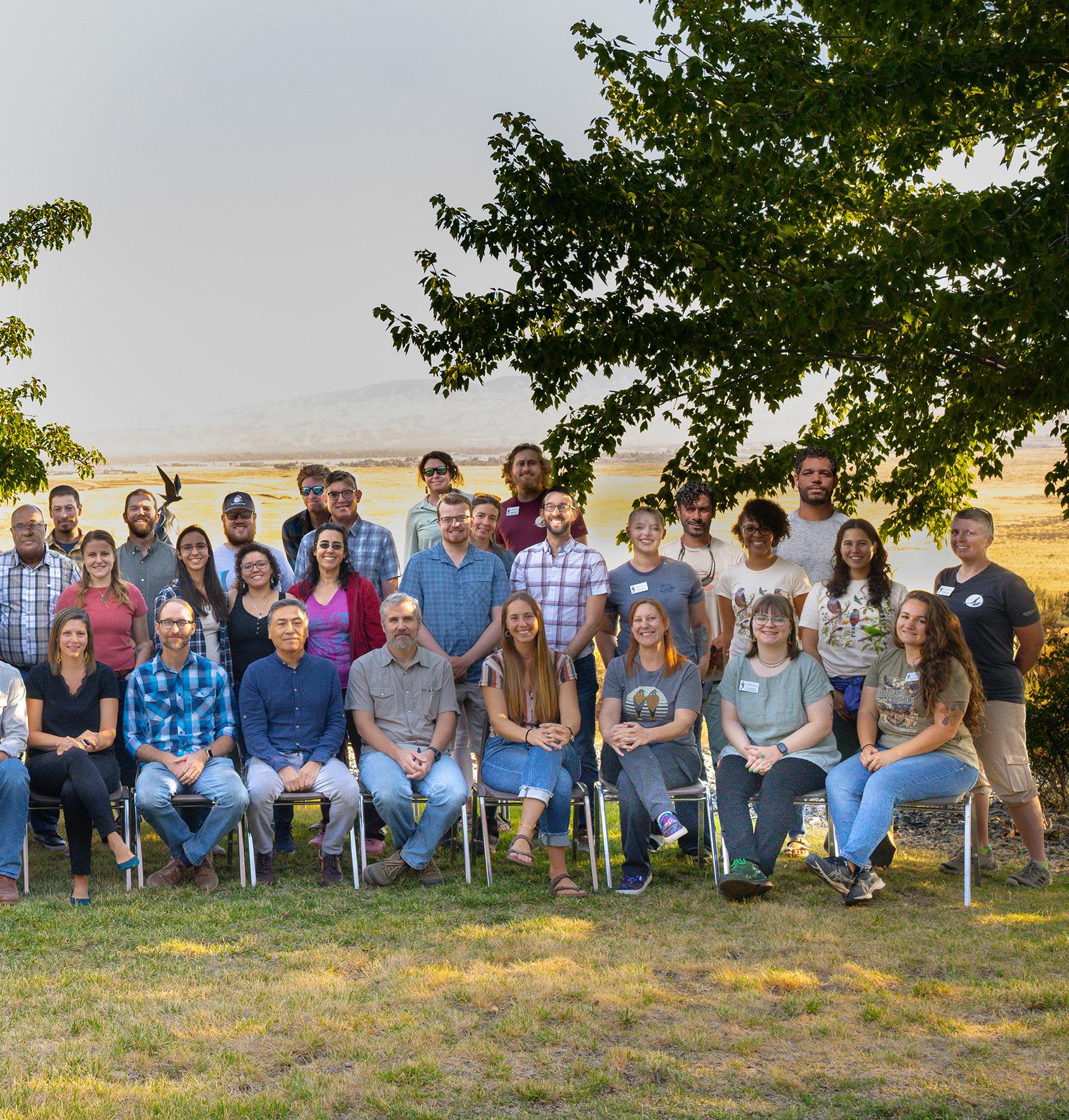
Since 1970, The Peregrine Fund has supported students across the globe through training, mentorship, and direct funding with scholarships. To date, those students have earned 177 advanced degrees, including 44 PhD and 133 MSc or equivalent degrees. Additionally, The Peregrine Fund has supported students working to earn BSc degrees. Below are the students who were either pursuing degrees or who graduated in 2024 with direct support from The Peregrine Fund.
2024 GRADUATES SUPPORTED BY THE PEREGRINE FUND:
APLOMADO FALCON PROGRAM | TEXAS:
David Bontrager, MSc | Boise State University (U.S.A.)
NEOTROPICAL STUDENT EDUCATION
PROGRAM:
Paul Monar, MSc | Universidad Rey Juan Carlos (Spain)
Jose Camarena, MSc | Universidad Nacional Toribio Rodríguez de Mendoza de Amazonas (Peru)
Julian Padro, Post-doctoral | University of Göttingen (Germany)
AFRICA PROGRAM:
Ivan Oruka, MSc | Gulu University (Uganda)
MADAGASCAR PROGRAM:
Ruberot Tiambelo, MSc | Mahajanga University (Madagascar)
STUDENTS PURSUING DEGREES WITH SUPPORT FROM THE PEREGRINE FUND:
GYRFALCON PROGRAM | ALASKA:
Sage Dale (MSc) | Boise State University (U.S.A.)
Michael T. Henderson (PhD) | Boise State University (U.S.A.)
GOLDEN EAGLE PROGRAM | NEW MEXICO:
Tom Hudson (MSc) | Virginia Tech (U.S.A.)
SCIENCE PROGRAM | IDAHO:
Carolina Granthon (PhD) | Boise State University (U.S.A.)
NEOTROPICAL STUDENT EDUCATION PROGRAM:
Diego Mendez (PhD) | Universidad Autónoma de Madrid (Spain)
Rocio Almuna (PhD) | Pontificia Universidad Católica de Chile (Chile)
Victor Gamarra (PhD) | Universidad Nacional del Comahue (Argentina)
Daniel Orizano (MSc) | Universidad Nacional Daniel Alcides Carrión (Peru)
Caetano Mourão (MSc) | University of São Paulo (Brazil)
Alejandra Parrado, MSc (Post-thesis) | Universidad Industrial de Santander (Colombia)
Alan Monroy, Msc (Post-thesis) | Universidad Veracruzana (Mexico)
Jimmy Velastegui, MSc (Post-thesis) | Universidad Regional Amazónica Ikiam (Ecuador)
Jaime Zabarburo, MSc (Post-thesis) | Universidad Nacional Toribio Rodríguez de Mendoza de Amazonas (Peru)
Adrian Naveda, PhD (Post-doctoral) | Mississippi State University (U.S.A.)
AFRICA PROGRAM:
Bruktawit Gezahegn (PhD) | Jimma University (Ethiopia)
Michael Bode Agunbiade (PhD) | Bradenburg Technical University (Germany)
Martin Odino (MSc) | University of Exeter (England)
Florence Okoda (PhD) | Gulu University (Uganda)
PANAMA PROGRAM:
Danitza Membache (BSc) | University of Panama (Panama)
Manuel Mosquera (BSc) | ISAE University (Panama)
Indelira Rito (BSc) | ISAE University (Panama)
Yilianis Chamarra (BSc) | ISAE University (Panama)
Yeiselanis Membache (BSc) | ISAE University (Panama)
Juan Grajales (BSc) | University of Panama (Panama)
Argelis Cortez (BSc) | ISAE University (Panama)
Romario Grajales (BSc) | ISAE University (Panama)
David Bejerano (BSc) | Isthmus University (Panama)
Darisnel Carpio (BSc) | Isthmus University (Panama)
Gladilsa Dogirama (BSc) | UMECIT University (Panama)
Jairo Bailarin (BSc) | UMECIT University (Panama)
Edy Grajales (BSc) | UMECIT University (Panama)
Fabio Diaz (PhD) | Boise State University (U.S.A.)
MADAGASCAR PROGRAM:
Fabio Christol Andrianandrasana (MSc) | Toliara University (Madagascar)
Jean Philomen Razanakoto (MSc) | Toliara University (Madagascar)
Rodolph Mahavitriky (MSc) | Toliara University (Madagascar)
Zafison Raymond Manandahy (MSc) | Toliara University (Madagascar)
Nivotiana Johannah Rakotondramanana (MSc) | Antananarivo University (Madagascar)
Tinarivo Cynthia Andomalala (MSc) | Antananarivo University (Madagascar)
Tsiory Safidinandrianina (MSc) | Antananarivo University (Madagascar)
Victorine Rasoazafy (MSc) | Toliara University (Madagascar)
R. M. Antoinette Razakaniaina (MSc) | Antananarivo University (Madagascar)
N. M. Tatamo Ravakiniaina (MSc) | Antananarivo University (Madagascar)
Fahendrena Randriamanantena (MSc) | Antananarivo University (Madagascar)
Safidifenohasina Rakotonirina (MSc) | Toliara University (Madagascar)
Ideal Dinafitiavana (MSc) | Toliara University (Madagascar)
Mananjara Anna Mahefaniaina (PhD) | Antananarivo University (Madagascar)
Natacha Audige Rakotozanany (PhD) | Toliara University (Madagascar)
Riariot Aurélien Rabenandrasana (PhD) | Toliara University (Madagascar)
Ratombonirina Adolis D. A. (PhD) | Toliara University (Madagascar)
Julio Perrin Tsimbazafimahefa (PhD) | Toliara University (Madagascar)
Moia Florentine (PhD) | Toliara University (Madagascar)
Marcellia Kazikely (PhD) | Toliara University (Madagascar)
Radoniaina Razafiherison (PhD) | Toliara University (Madagascar)


After remarkable success protecting African vultures and raptors in Kenya, we’re thrilled to announce our expansion into Tanzania!
Leading this exciting new chapter is Dr. Corinne Kendall, (pictured at lower right) our newly appointed Southern Africa Program Director. With over a decade of specialized experience studying African vulture populations, including her initial work with The Peregrine Fund during her PhD from 2008–2012, Corinne brings invaluable expertise to our team. This initiative builds upon foundational work supported by the North Carolina Zoo, which remains a key partner in our conservation efforts.
Just as in Kenya, poisoning poses the greatest threat to Tanzania’s vultures. These magnificent birds are indirectly killed during human-wildlife conflict poisoning and also tragically targeted for their body parts, which are harvested for belief-based use often resulting in mass poisoning events that devastate entire populations.
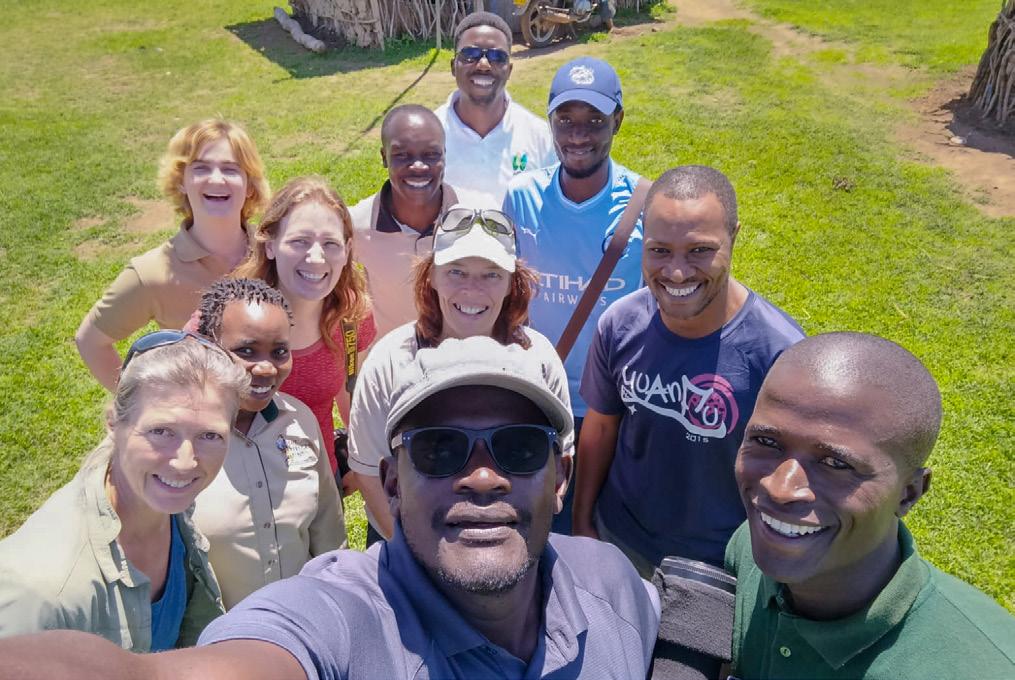

Our Tanzania Program will:
• Use tagged vultures to respond to and address poisoning events in real-time
• Conduct extensive household surveys to assess whether poison use has changed following community education about the human health risks of illicit pesticides
• Support three Tanzanian graduate students researching vulture nesting and movement patterns throughout the Serengeti ecosystem
In addition, as we expand our work across southern Africa, this new team will advance innovative tracking methods pioneered with the North Carolina Zoo and the Endangered Wildlife Trust to monitor over 100 vultures across 11 countries to harness movement data for wildlife conservation. We look forward to sharing updates as this vital conservation work takes flight!


We teased you last year with a glimpse into a groundbreaking new book spearheaded by Christopher McClure, PhD, Executive Vice President of Conservation and Science at The Peregrine Fund. While 2024 was devoted to meticulous research and writing, in 2025, what began as an ambitious project will evolve into a fully-fledged masterpiece.
The State of the World’s Raptors represents a groundbreaking scholarly contribution to ornithological research. This comprehensive volume is an essential reference that bridges academic insight with critical and global conservation knowledge, offering unparalleled value to both seasoned researchers and emerging professionals in the field of raptor biology and conservation.
Designed to be both authoritative and accessible, the book serves as an indispensable resource for biologists at every stage of their career from newly minted graduate students developing thesis proposals to veteran field researchers seeking the most current scientific perspectives on raptor populations and ecosystems.
In a world where raptor populations face unprecedented challenges, this book will arrive at the perfect moment equipping researchers, conservationists, and policymakers with the definitive resource they need to protect these iconic species for generations to come.
Mark your calendars and clear some space on your bookshelf this is one release that conservation enthusiasts, ornithologists, and nature lovers alike won’t want to miss!
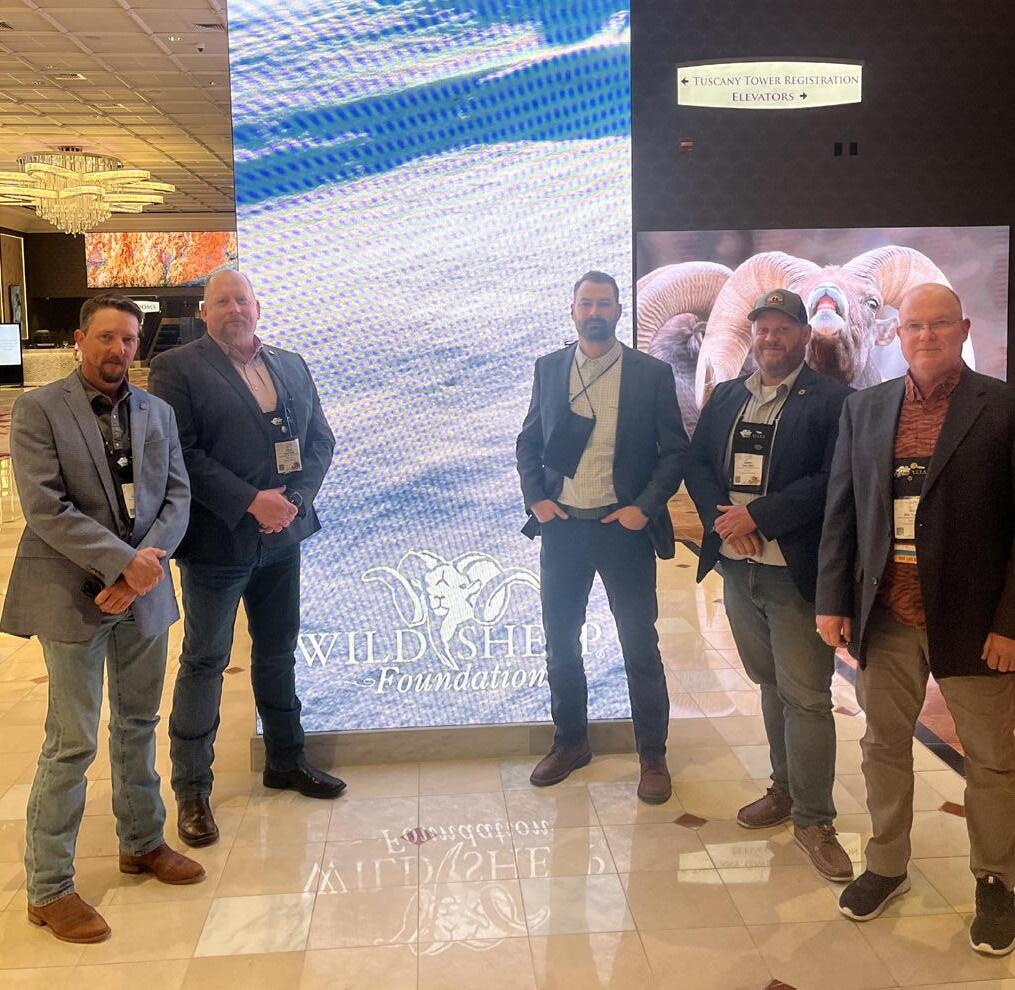
The North American Non-Lead Partnership is soaring to new heights in 2025. With international expansion anticipated, the Partnership has the potential to take its mission global while strengthening domestic relationships across the United States.
The recent U.S. Fish and Wildlife Service State of the Birds Grant marks a significant milestone, directing crucial resources toward the Partnership through a subgrant to increase our ability to reach more hunters.
Partnerships with the Arizona Game and Fish Department and the Utah Division of Wildlife Resources have been formalized, creating a powerful collaborative network for regional condor conservation efforts. These relationships ensure that our initiatives are well-supported and aligned with local expertise.
As we undergo a thoughtful rebranding process, we’re carefully crafting messaging that resonates with diverse audiences while honoring our partners’ contributions. This inclusive approach ensures relevance across all stakeholder groups.
Looking ahead, the Northeast Fish and Wildlife Association has secured funding through 2025, providing stability for our Northeast operations and enabling long-term planning for sustainable impact throughout the region.
The future indeed looks bright for the Partnership, with an ever-expanding commitment to the mission.
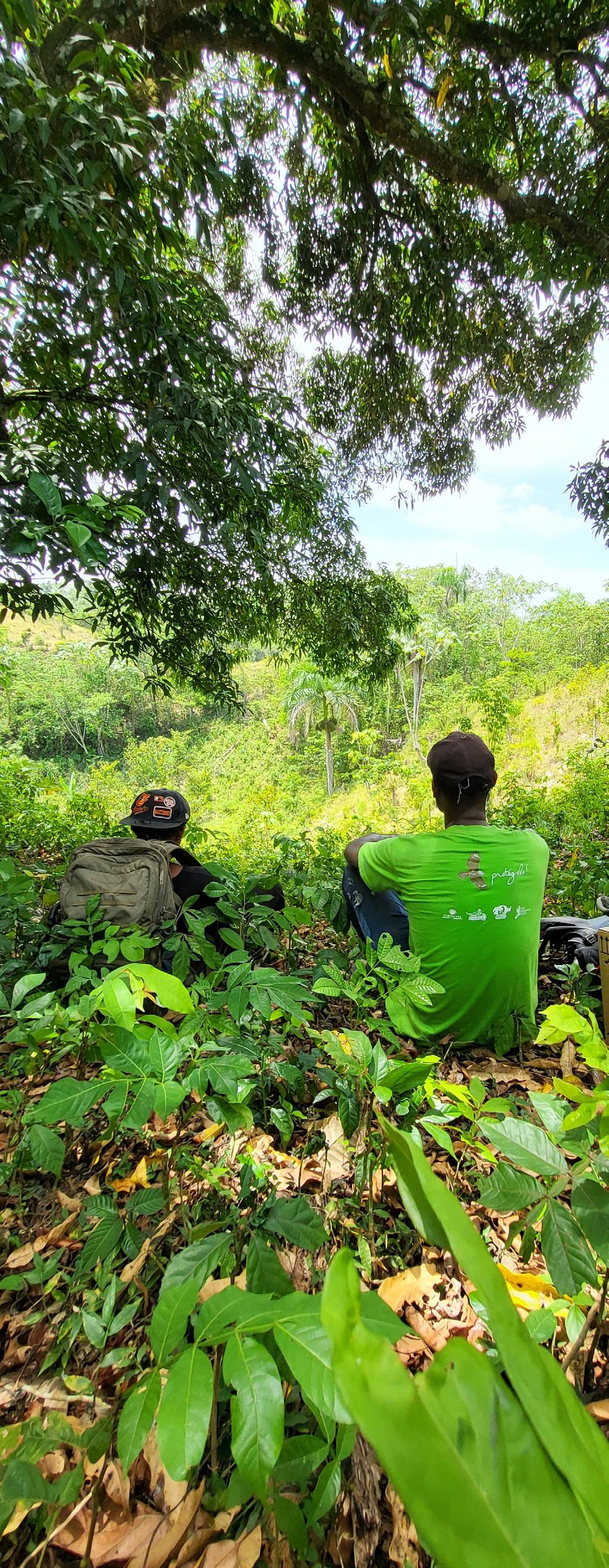

Moving beyond conventional conservation approaches, The Peregrine Fund has crafted a powerful legacy where science meets action in perfect harmony. Our visionary approach transforms scholarly research into immediate field initiatives, breathing life into data that might otherwise remain confined to academic journals. We don’t simply protect raptors—we weave together entire ecosystems, local communities, and future conservation leaders into a tapestry of sustainable change.
What truly sets The Peregrine Fund apart is our unwavering belief that lasting conservation success requires everyone at the table. By building bridges between governments, industries, and diverse stakeholders while empowering local communities as environmental stewards, we’ve created a model where human prosperity and ecological health flourish together. This holistic vision, coupled with an investment in tomorrow’s conservation leaders, ensures that our impact will continue to soar across generations—proving that when we unite knowledge with compassion, there are no limits to the positive change we can realize for our planet.
Thank you for supporting us in this year of science and conservation at its best. We continue to be galvanized by your unwavering commitment to our mission.


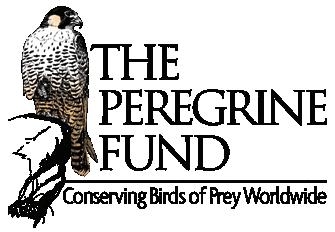

“We are overjoyed with the remarkable progress we’ve made over the past two decades and remain profoundly hopeful for the future of the Ridgway’s Hawk. With the Conservation Action Plan guiding our path forward, we see a bright future for these magnificent birds.”
Marta Curti, Hispaniola Program Director